Black trim has emerged as the small-but-mighty upgrade that can pivot an entire room from bland to intentional. Whether framing sun-filled farmhouse windows or sharpening sleek city lofts, the deep border works like eyeliner, defining architecture while disappearing just enough to let other elements shine. Home stagers note that prospective buyers read the look as both modern and timeless, and DIYers appreciate that a quart of paint delivers impact rivaling new millwork. Ahead you’ll find twenty fresh ways to weave black trim into every corner of the house, proving versatility is only a brushstroke away.
1. Crisp White Walls, Bold Black Trim
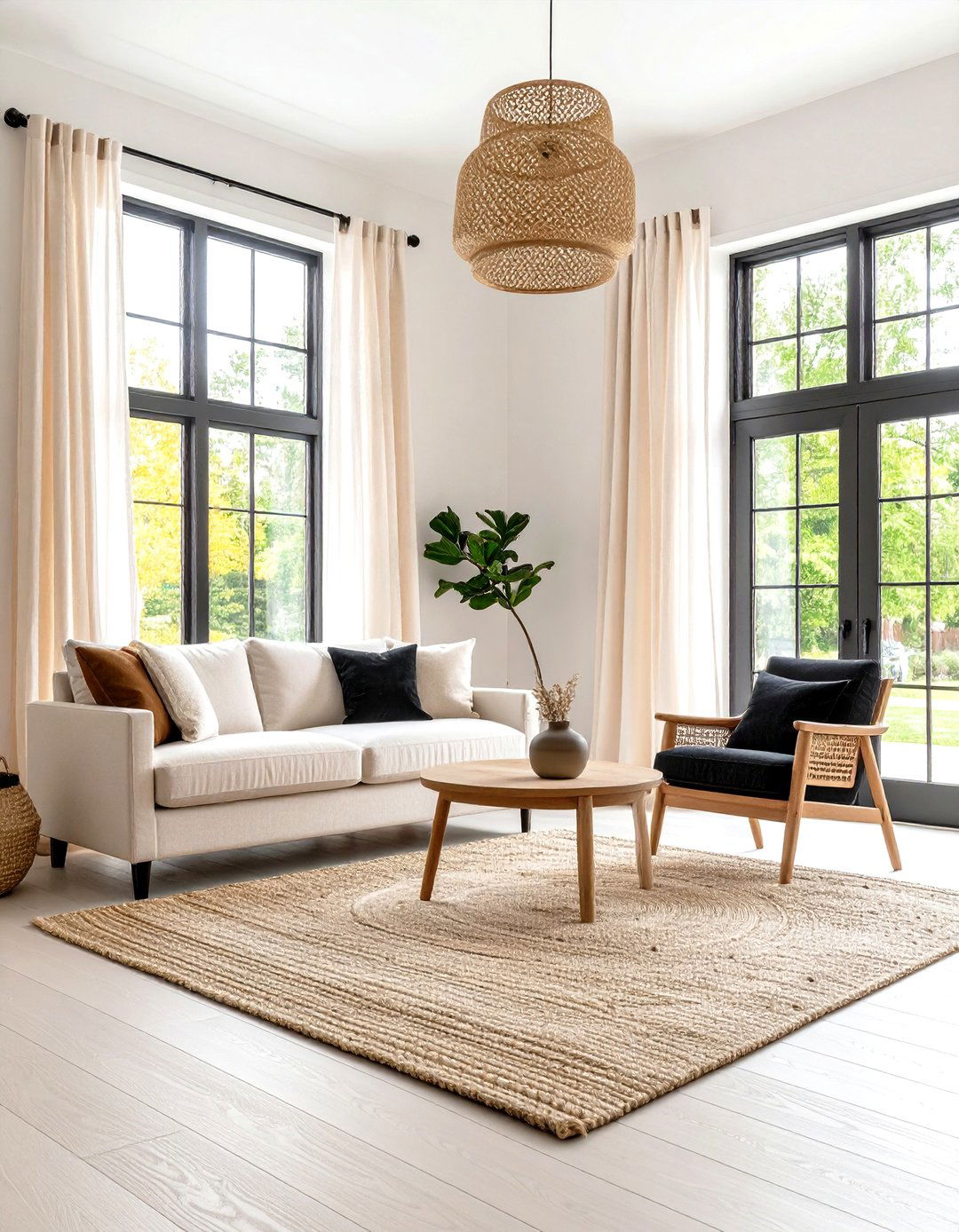
A burst of white walls framed by black trim instantly clarifies every line in a room, making even modest architecture look intentional and sharp. Designers explain that the dark border acts like a picture frame, focusing the eye on proportions and creating a fresh, high-contrast vibe that feels current yet timeless. Because black recedes visually, ceilings appear slightly taller and windows feel more expansive, a trick that can help small homes breathe. To soften the edge, keep furniture light and add natural textures—think pale oak, woven rugs, and linen drapes—so the black trim reads as graphic punctuation rather than a heavy outline.
2. Modern Farmhouse Black Trim Windows

Consider the modern farmhouse, where rustic beams meet white shiplap: swap predictable white window casings for matte black trim and the whole scene suddenly feels curated rather than quaint. The dark surround frames pastoral views like art and tempers intense daylight, reducing glare while highlighting the grain of reclaimed wood tables. Layer in warm metals, such as aged brass cabinet pulls, so the black trim links old and new. For color, sage or putty walls lend softness, yet still allow the black to pop. When budgets allow, pair the trim with black-grid interior doors to reinforce the farmhouse-industrial crossover. Simple roller shades keep the profile clean.
3. Industrial Loft Black Trim Metal
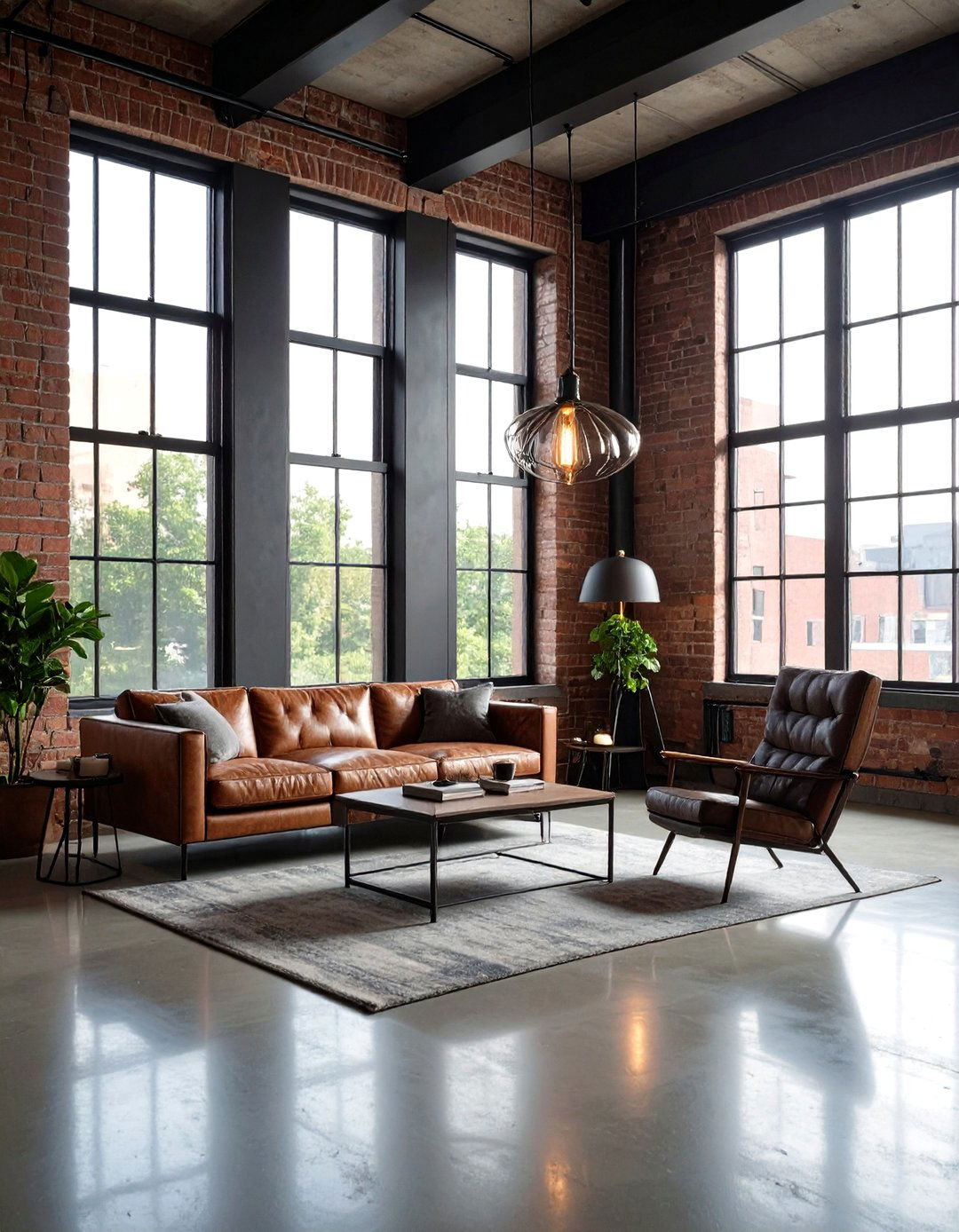
Unlike rough brick walls, sleek black steel trim can deliver loft-style drama without overwhelming narrow city apartments. By echoing metal fire escapes and window mullions outside, interior black trim knits urban views with interior finishes, creating a seamless extension of the skyline. Pair it with exposed ductwork, Edison pendants, and neutral concrete floors for an industrial edge that still feels cozy. Designers advise keeping walls a light greige so shadows cast by the trim read as intentional artwork rather than darkness. Add one large plant or leather chair to soften acoustics and balance the crisp geometry. Polished hardware then completes the story.
4. Cozy Bedrooms with Black Crown Trim
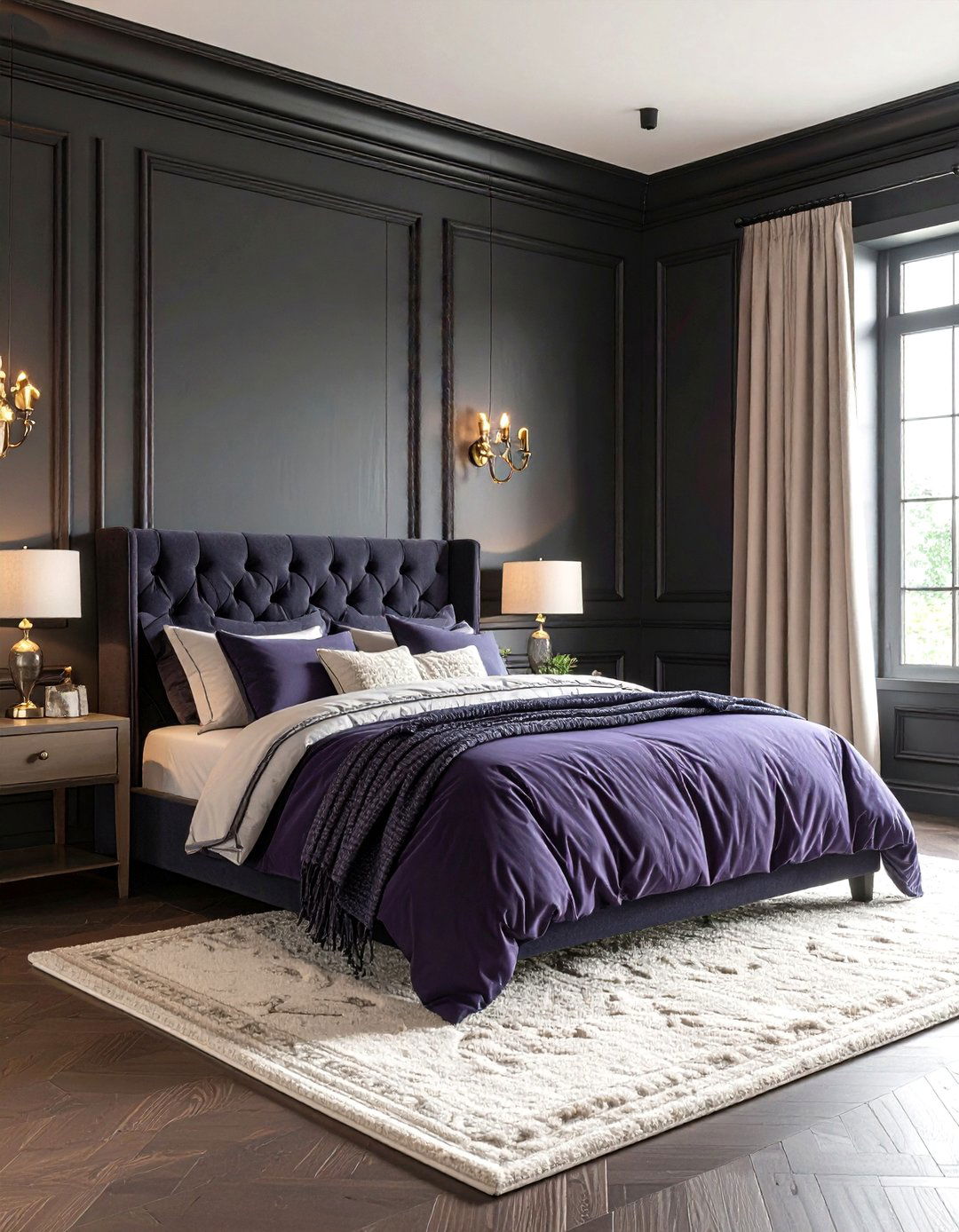
To usher in the cocooning bedroom trend forecast for 2025, designers wrap ceilings with black crown molding that blurs boundaries and invites rest. The dark line lowers visual height just enough to feel intimate while directing eyes toward plush bedding and layered lighting. Painting doors and baseboards the same black ensures continuity and avoids halting the gaze. Because black trim can swallow daylight, lighting strategy matters: add dimmable wall sconces and warm Edison bulbs for ambiance after dusk. A quilt in deep plum or rust lets the room stay moody without turning monochrome, and an ivory area rug reminds feet of morning comfort.
5. Vibrant Walls Framed by Black Trim
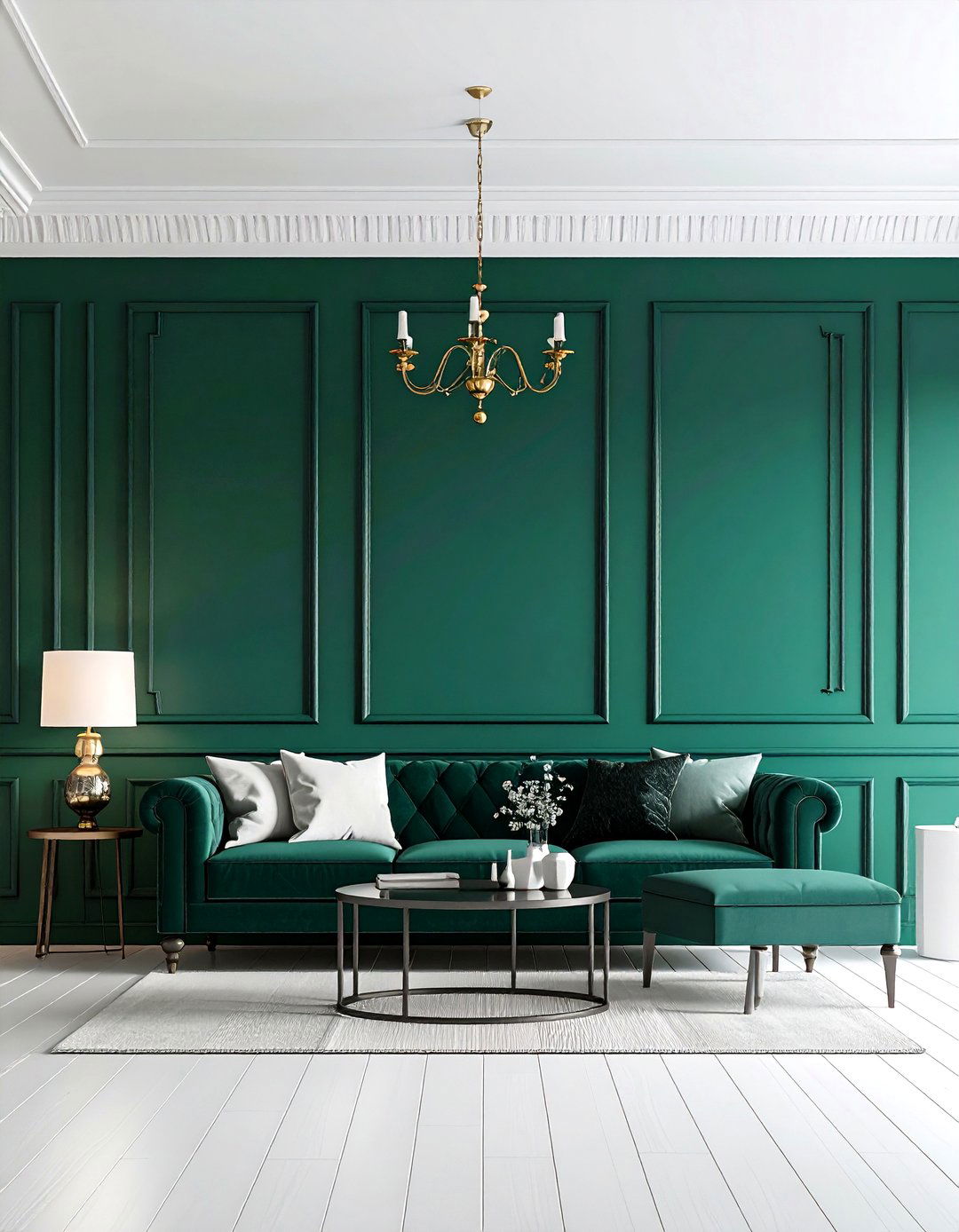
Surprisingly, black trim interiors thrive against saturated walls; emerald, ochre, even burnt orange glow brighter when edged in deep charcoal. The trim acts as a neutral buffer that keeps bold pigments from bleeding into ceilings or adjacent rooms, so homeowners can play with color without chaos. When testing swatches, paint a sample board with the black trim color next to your chosen wall hue to judge undertones in different light. Keep ceiling white for lift, and repeat the trim color once—a picture rail, lamp base, or sofa leg—to knit the palette. The result is vibrant yet cohesive, not busy atmosphere.
6. Balancing Black Trim with Warm Wood

Looking to warm things up? Pair black trim with honeyed oak floors or walnut cabinetry to illustrate how opposites attract. The soft grain relaxes the dark outline, preventing a space from feeling stark, while the trim sharpens wood silhouettes and draws attention to craftsmanship details like dovetail joints. Finish woods in matte or satin so they glow gently beside the deep trim rather than competing for shine. Accent with linen upholstery, dried grasses, and hammered copper so the palette stays earthy. This marriage of black trim and wood delivers sophistication without sacrificing the comfort many homeowners crave in daily life.
7. French Doors Showcasing Black Trim

Another elegant tactic is framing interior French doors with rich black trim, turning a simple passage into the star of an open plan. The dark outline emphasizes the grid of glass, bouncing light between rooms and lending vintage conservatory charm. Keep hardware in unlacquered brass or matte black for continuity. If the adjacent rooms have different wall colors, the unified door trim creates a visual hinge, making color transitions feel intentional. Lay an oversized jute runner beneath the doorway so the black trim does not appear to float, and echo the tone with slim picture frames nearby for cohesion throughout.
8. Minimalist Spaces Anchored by Black Baseboards
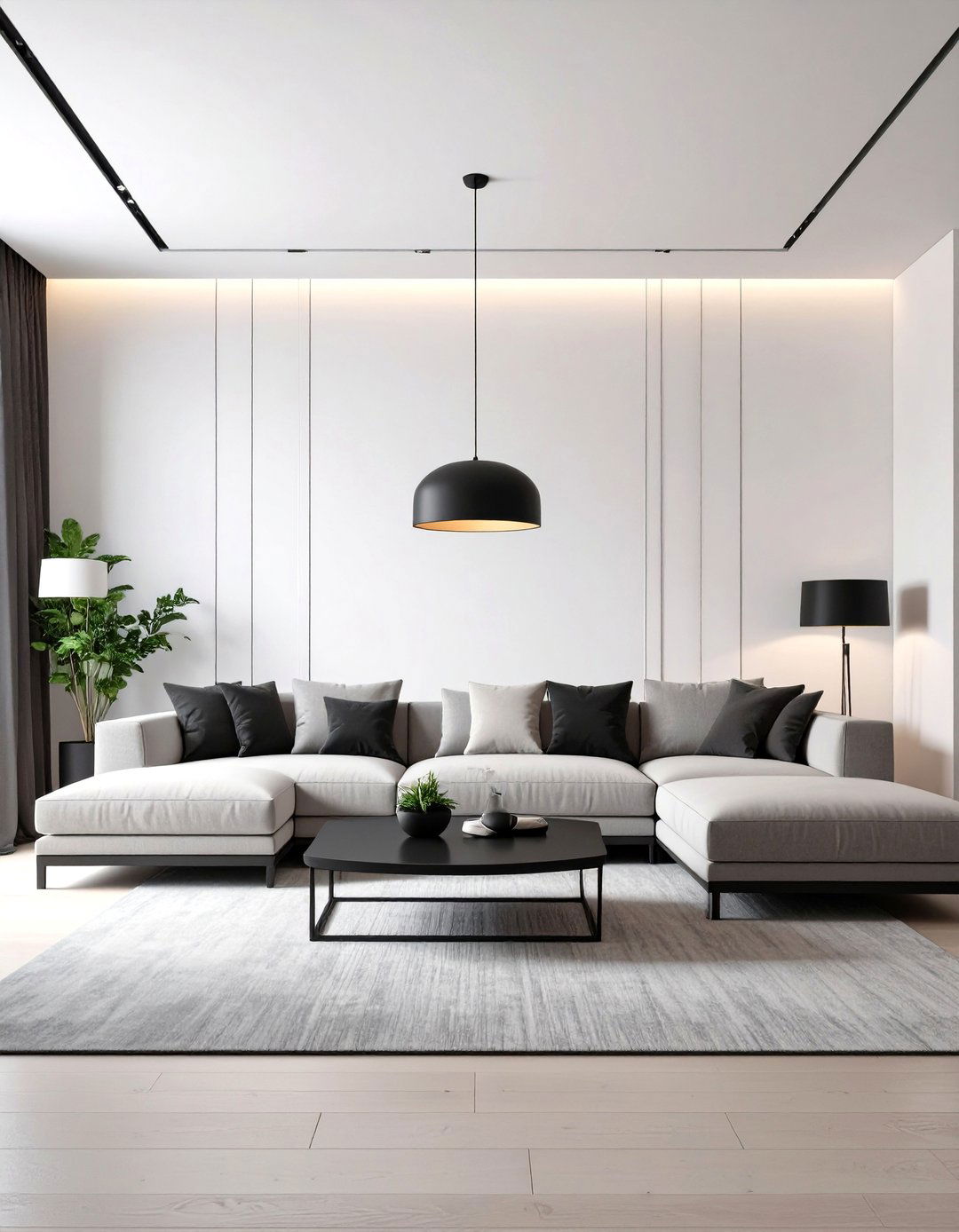
Minimalist devotees often skip elaborate profiles and rely on pencil-thin black baseboards to ground airy white rooms like a fine underline beneath text. Because the board sits at eye level when seated, its color helps furniture feel anchored without the visual heft of a darker floor. Keep the baseboards low-sheen to prevent distracting reflections, and run the same paint onto electrical outlet covers for a tidy look. When walls lack artwork, the continuous horizontal black trim becomes graphic art in itself, guiding the gaze around corners. Cleaning is simple too; scuffs hide better on dark paint than on bright white.
9. Accenting Arches with Black Trim Flair
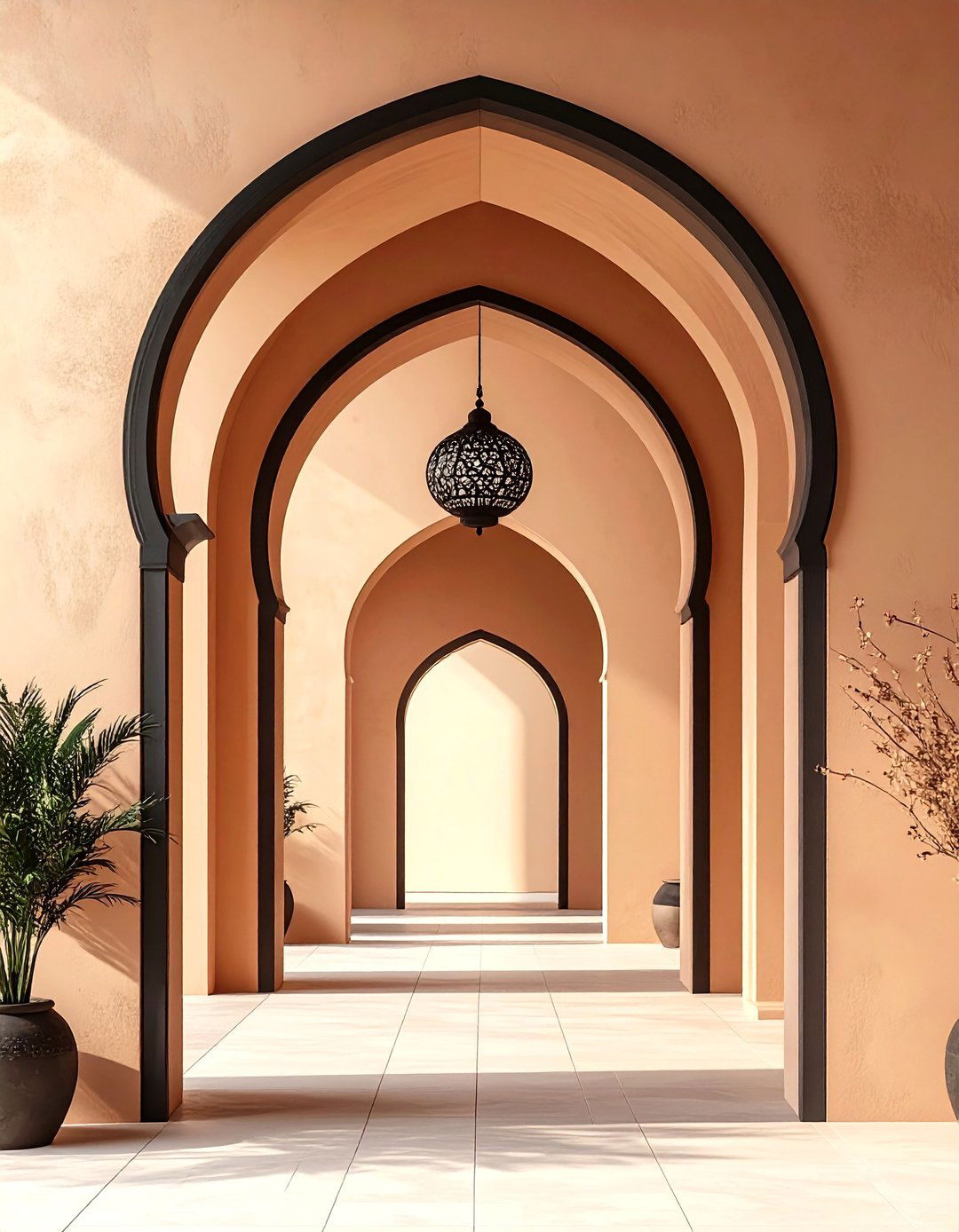
With curved archways trending again, outlining their shape in matte black trim emphasizes the architecture like calligraphy on parchment. The dark stroke draws attention to the gentle curve and adds a crisp line that photographs beautifully for social media. Paint the surrounding walls a pale clay or parchment shade so the contrast is strong yet still warm. Because arches seldom have thick jambs, choose a thinner profile molding and a fine-nap roller to keep edges clean. Echo the arch silhouette in accessories—rounded mirrors, domed pendants—to reinforce rhythm and ensure the black trim feels intentional rather than tacked on later visually.
10. Unifying Open Layouts via Black Trim
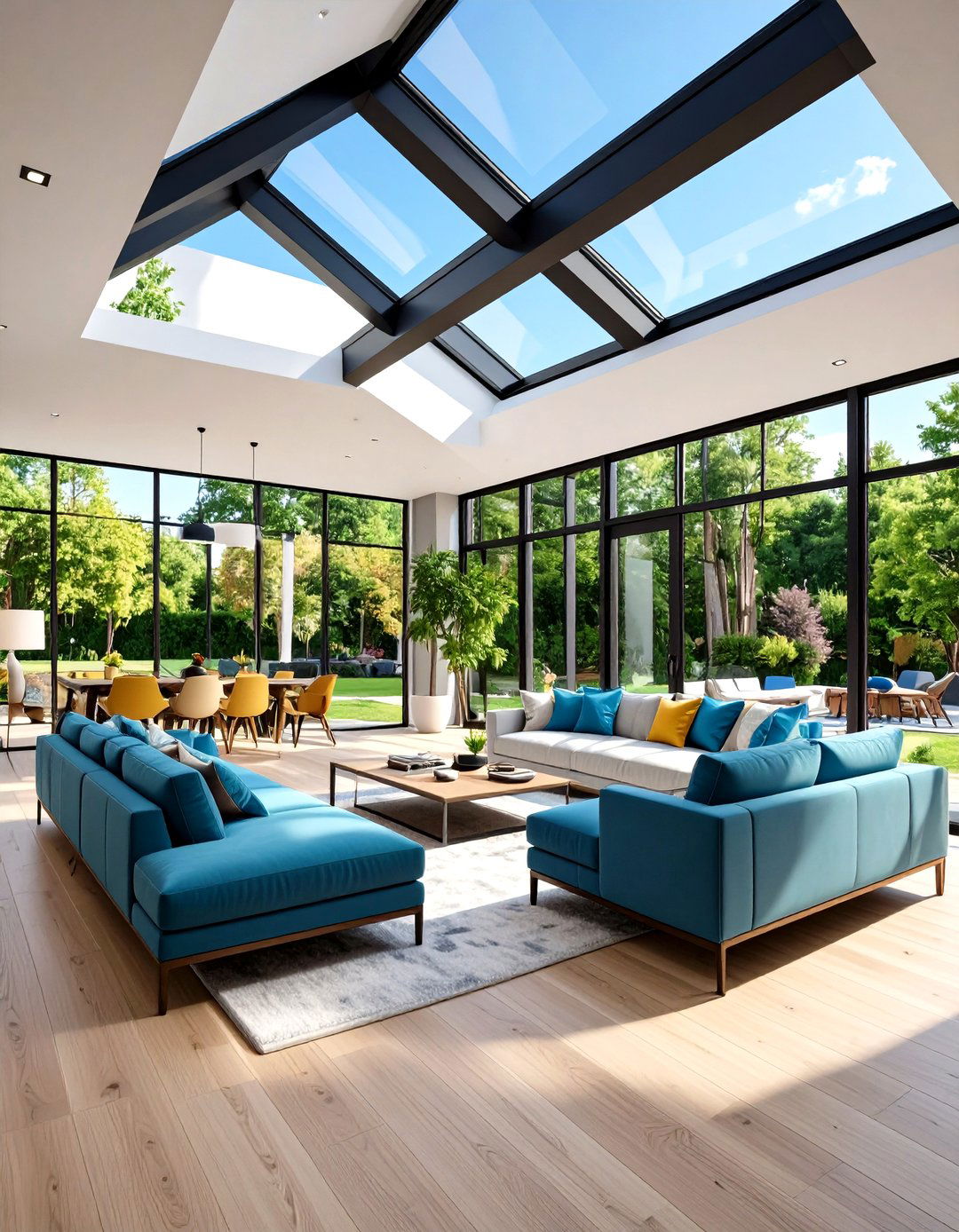
Owing to their lack of interior walls, open-concept homes risk feeling scattered, but carrying a single black trim color on every window and doorframe can pull the zones together like a ribbon. The continuous shade becomes the architecture’s consistent beat, allowing furniture and art to change tempo without jarring transitions. Use a satin finish: durable enough for kitchen splashes yet not too glossy for adjoining lounges. To avoid darkness, ensure flooring remains light and add skylights or clerestory windows where possible. The payoff is cohesion; guests may not notice the trim specifically, but they’ll sense the calm clarity it provides.
11. Kitchen Gains from Black Trim Details
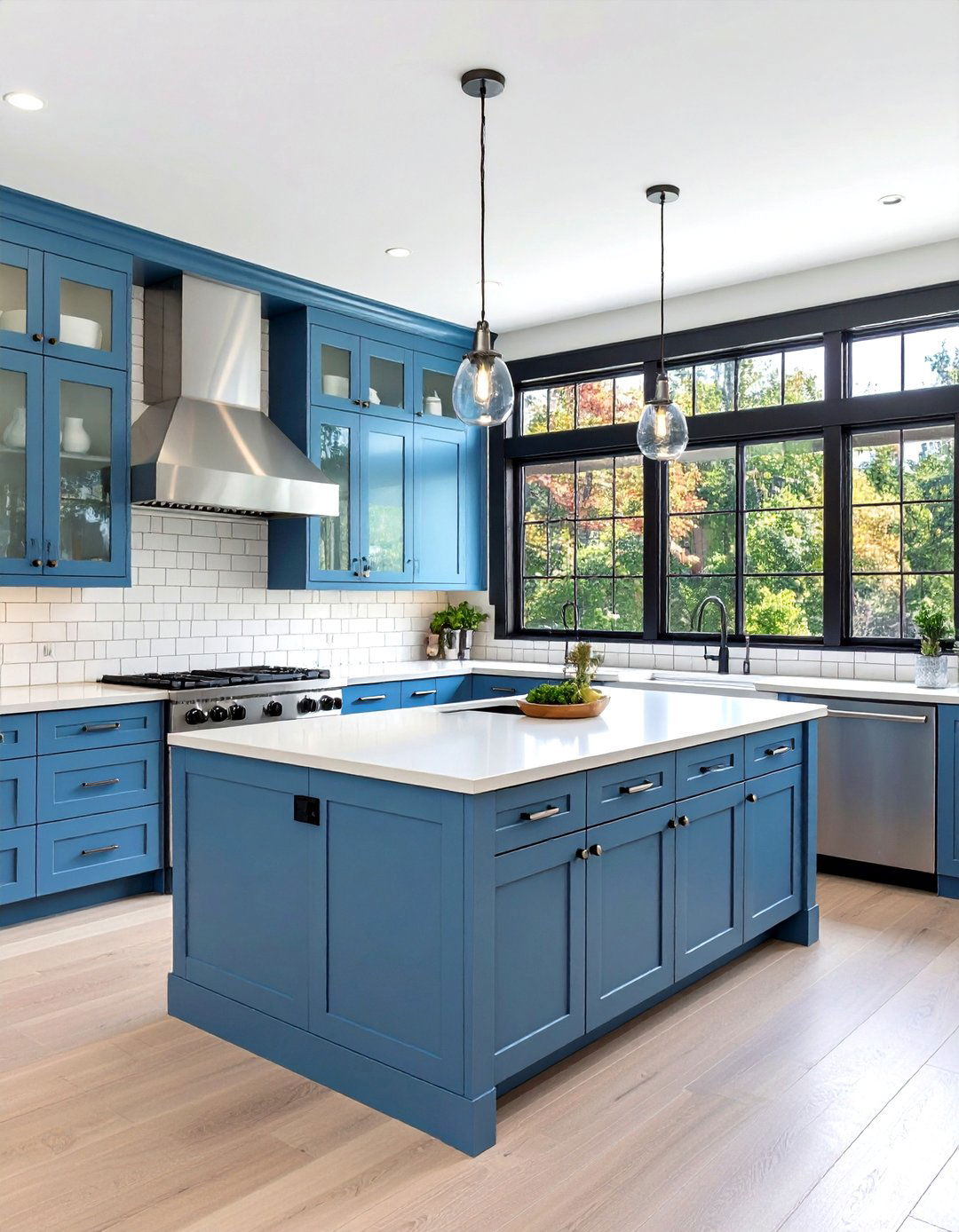
Around kitchen islands, black trim offers instant sophistication, echoing cast-iron skillets and dark stone counters gaining popularity for 2026 remodels. Frame windows and glass cabinets in satin black to highlight gleaming subway tiles, or outline the range hood for a focal point that costs far less than new cabinetry. In bright kitchens, the contrast masks inevitable cooking splatters until cleanup, a practical perk in busy family homes. Complement the trim with brushed stainless hardware so the palette feels balanced rather than heavy. If space is small, limit black to upper trim and keep lower cabinets light to prevent visual crush.
12. Picking the Right Finish for Black Trim
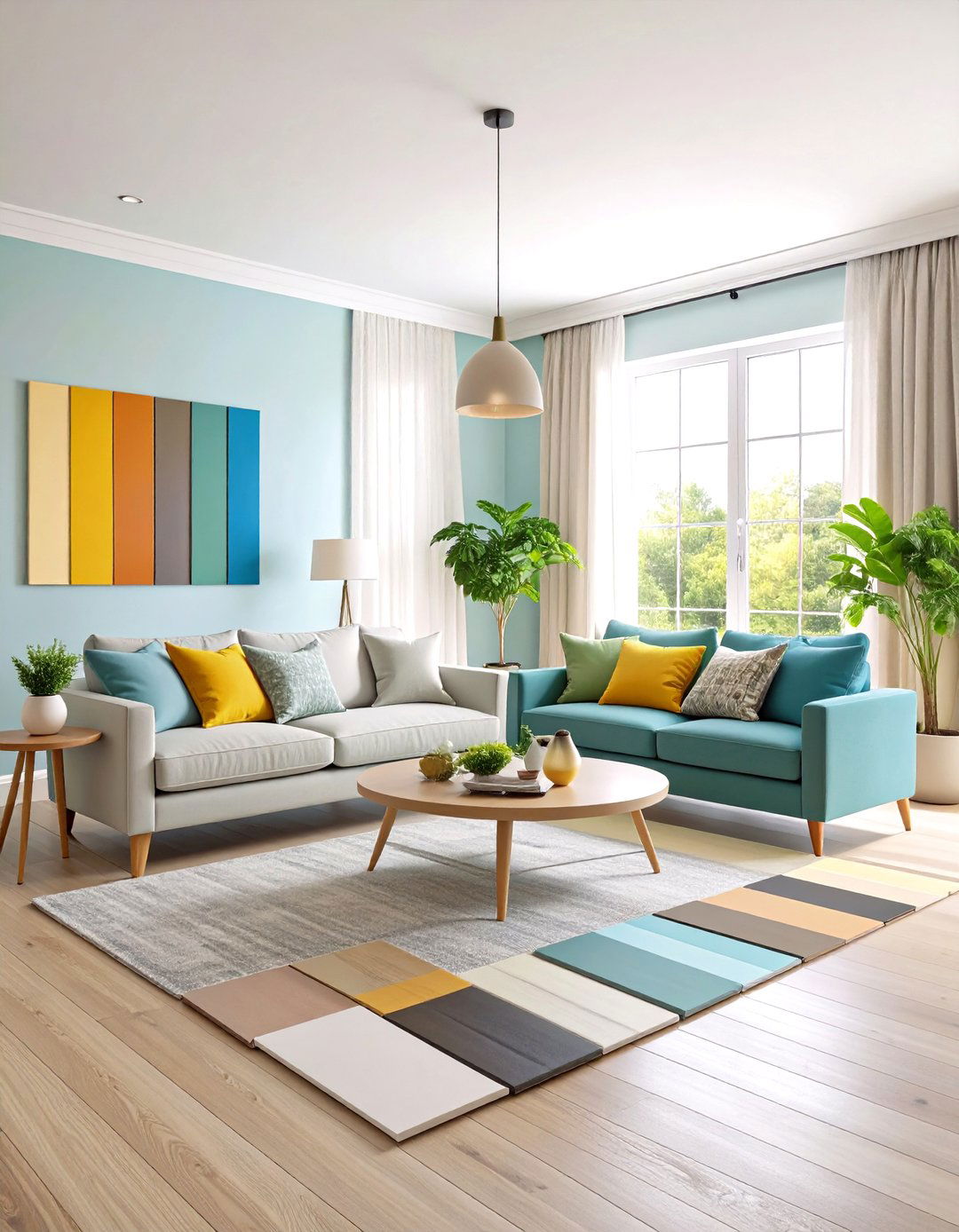
Experts caution that finish matters as much as color when specifying black trim interiors; semi-gloss highlights paneled doors while matte lends a softer, almost suede effect on window casings. High gloss can be stunning but reveals every nail hole, so reserve it for flawless millwork. Always test sheen on a scrap board placed near lighting fixtures to check reflection. Pair differing sheens strategically: matte baseboards hide dust, satin doorframes shrug off fingerprints, and eggshell crown molding minimizes ceiling glare. Mixing finishes, not colors, adds depth without clutter, a trick professionals use to elevate simple builder-grade trim to custom status today.
13. Prep & Care for Lasting Black Trim
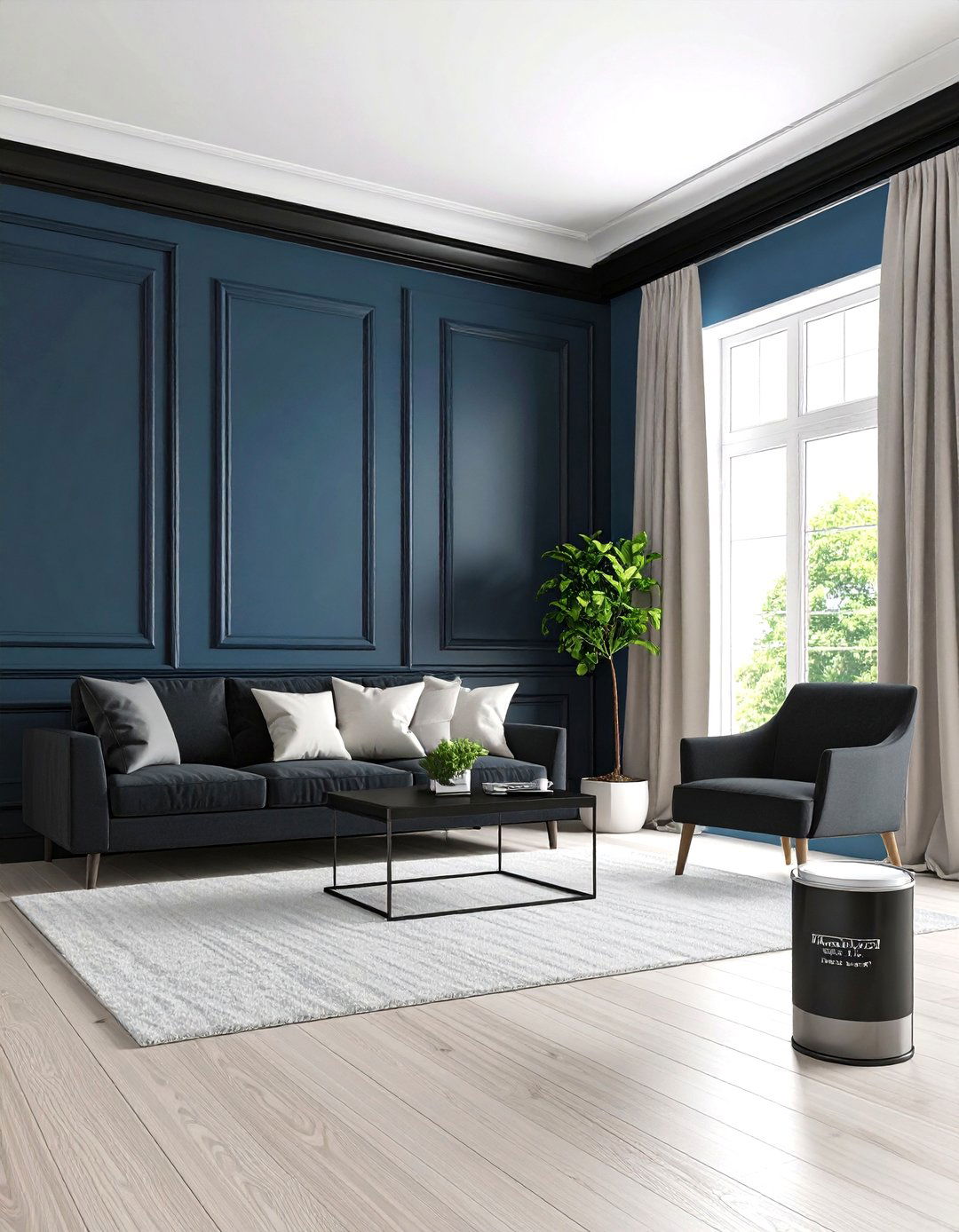
Before painting existing trim black, proper preparation prevents failures: clean with degreaser, lightly degloss, and prime with a bonding sealer so the dark coat adheres smoothly. Use painter’s tape along floors, then pull it while paint is still damp for knife-sharp lines. Dark pigments often need an extra coat; budget the time rather than skimping. Maintain black trim interiors by dusting weekly with a microfiber cloth, and spot-clean fingerprints using a damp sponge and mild soap—avoid abrasive cleaners that cut through sheen. Touch-up paint stored in a labeled jar lets you address dings quickly, ensuring the elegant edge stays crisp year after year.
14. Small Room Illusions with Black Trim
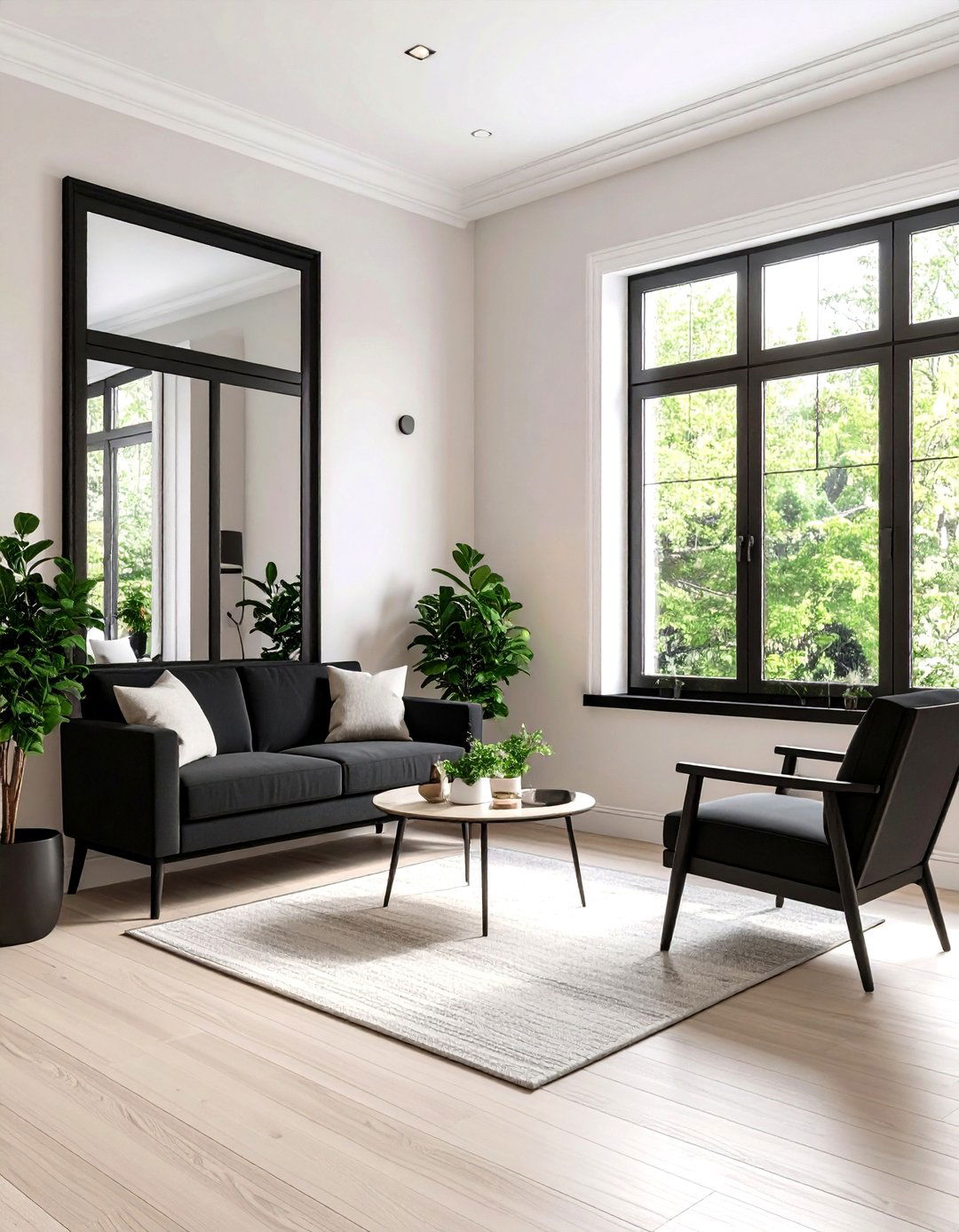
Despite fears that dark accents shrink rooms, black trim can actually make cramped apartments feel larger by pushing walls visually outward, the same way a theater proscenium frames a stage. Because the eye reads the dark border as the boundary, the lighter wall color seems to recede. Maximize the effect by keeping furniture legs slim and leaving at least two inches of wall visible above sofas for breathing space. Mirrors hung opposite black-trimmed windows bounce natural light, preventing gloom. If ceilings are low, paint only the vertical sides of crown molding black and leave the horizontal ledge white to lift height.
15. Sustainable Updates: Repainting Black Trim
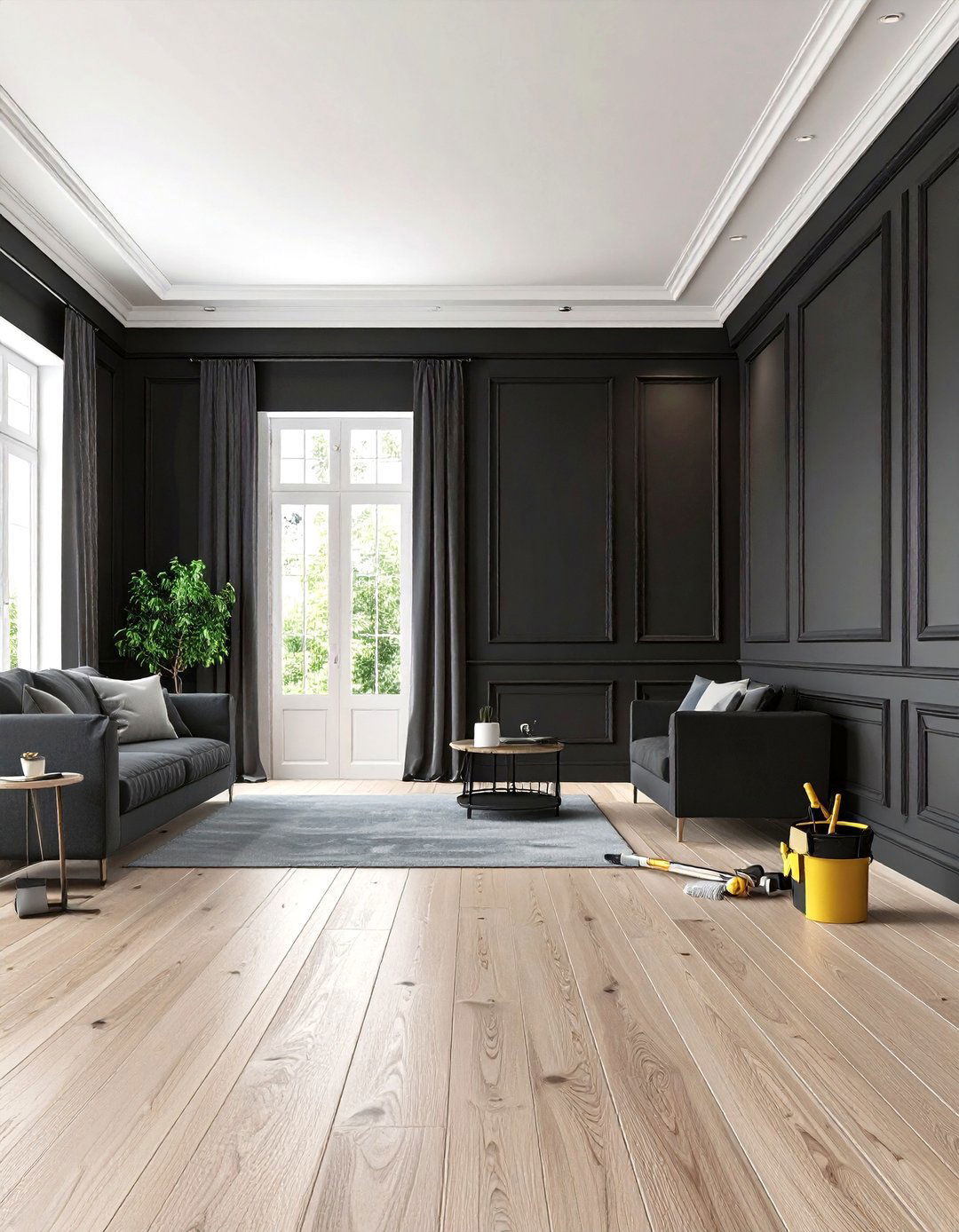
Sustainability-minded renovators appreciate that repainting existing pine or MDF casings in black trim demands far fewer resources than ripping them out for new hardwoods, yet the visual upgrade feels just as dramatic. Low-VOC acrylic paints further reduce environmental impact and clean up with water, saving harsh solvents. Rather than landfill old boards, lightly fill dents with wood putty and coat them in a rich satin black; imperfections disappear, extending lifespan. If you someday tire of the look, a primer and fresh color reverse the transformation without waste. Thus, black trim interiors can support green goals while still delivering bold style.
16. Traditional Homes Embracing Black Trim
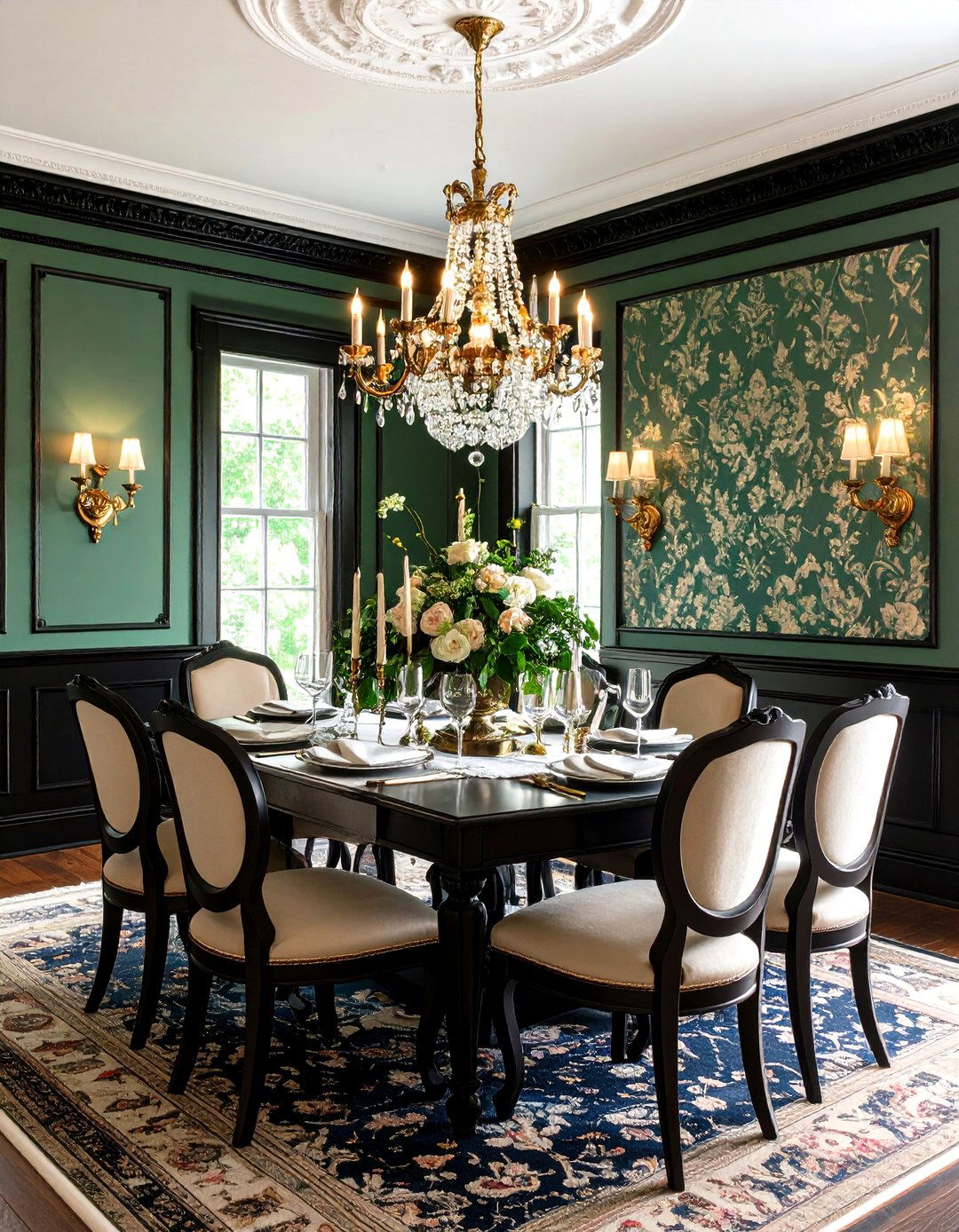
Traditionalists need not worry that black trim interiors betray period character; early Victorian houses often featured dark-stained or ebonized millwork that framed patterned wallpaper with authority. Painting existing picture rails, wainscots, and rosettes in satin black nods to that history while simplifying maintenance. Pair with warm neutrals—taupe damask wallpapers, brass sconces—so the scheme feels collected instead of costume. In formal dining rooms, a black chair rail can ground tall wainscoting and set off vintage china displays. Keep ceiling medallions white to preserve airiness, but let door transoms share the black shade to tie stories together vertically, harmoniously through layered details.
17. Timeless Bathrooms Using Black Trim
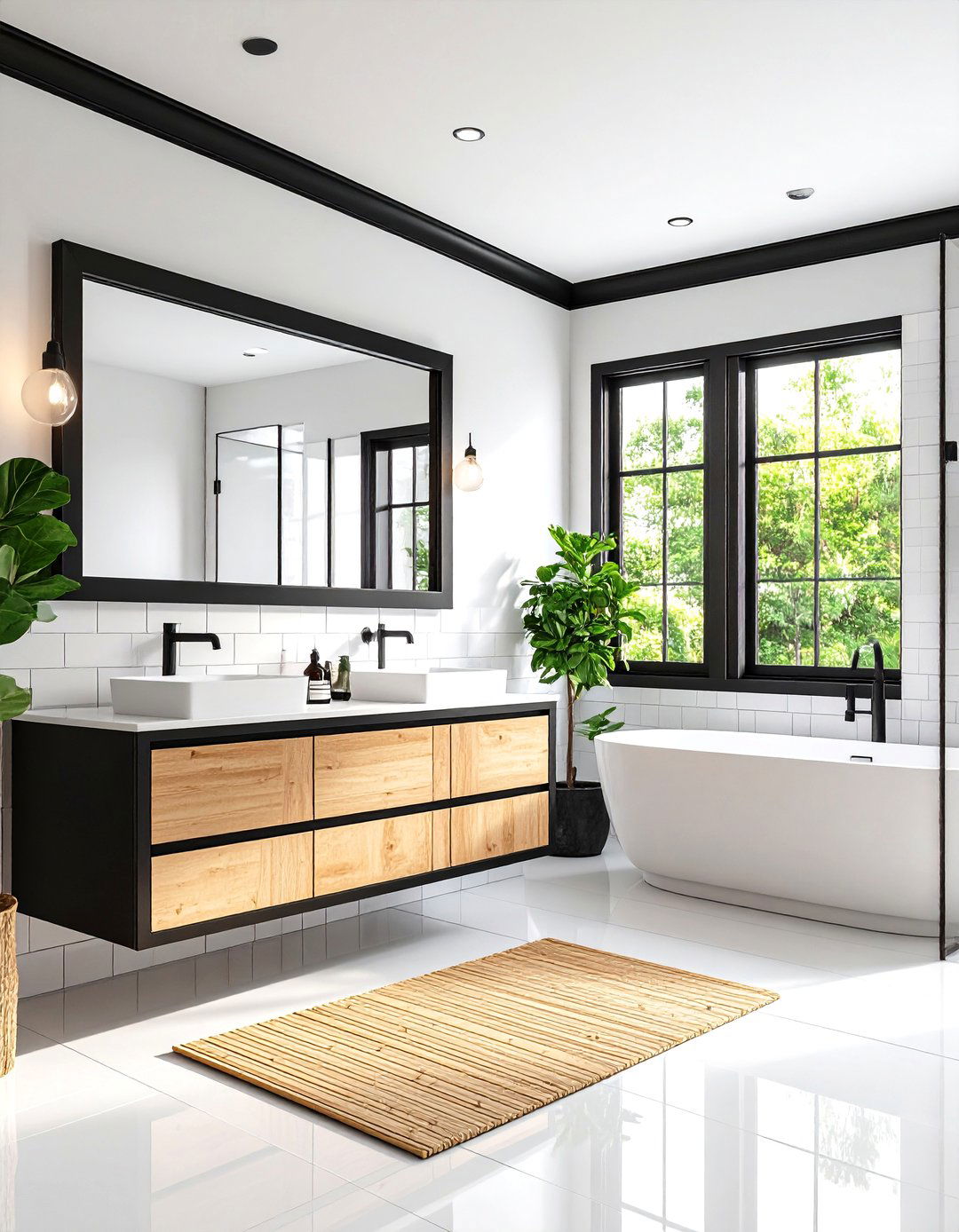
A black-and-white bathroom never dates, and black trim around mirrors, windows, and shower niches clarifies lines against glossy subway tile like ink on porcelain. Because moisture is constant, choose a mildew-resistant semi-gloss enamel and caulk seams in matching color so steam cannot seep beneath. To keep the palette from feeling cold, introduce texture—basket-weave floor tile, ribbed towels, and a bamboo bathmat. Matte black faucets extend the trim language, while white grout keeps surfaces bright. For storage, paint a vintage medicine cabinet the same black, reinforcing rhythm. Good ventilation and occasional wipe-downs prevent soap film from dulling the graphic impact over time.
18. Indoor-Outdoor Flow with Black Trim Continuity

Designers seeking seamless indoor–outdoor flow often carry black trim from interior windows to exterior casings, letting the eye travel unhindered through glass walls into the garden. The matching color prevents the frame from visually interrupting greenery, almost erasing the barrier between patio and living room. Inside, echo that connection with potted olives or citrus trees so the transition feels natural. Use exterior-grade black paint with UV blockers outside; then, repaint interior frames in the same hue but an easier-to-clean semi-gloss formula. The continuity makes modest terraces appear like extensions of the floor plan, maximizing usable square footage emotionally for residents.
19. Wallet-Friendly DIY Peel-and-Stick Black Trim
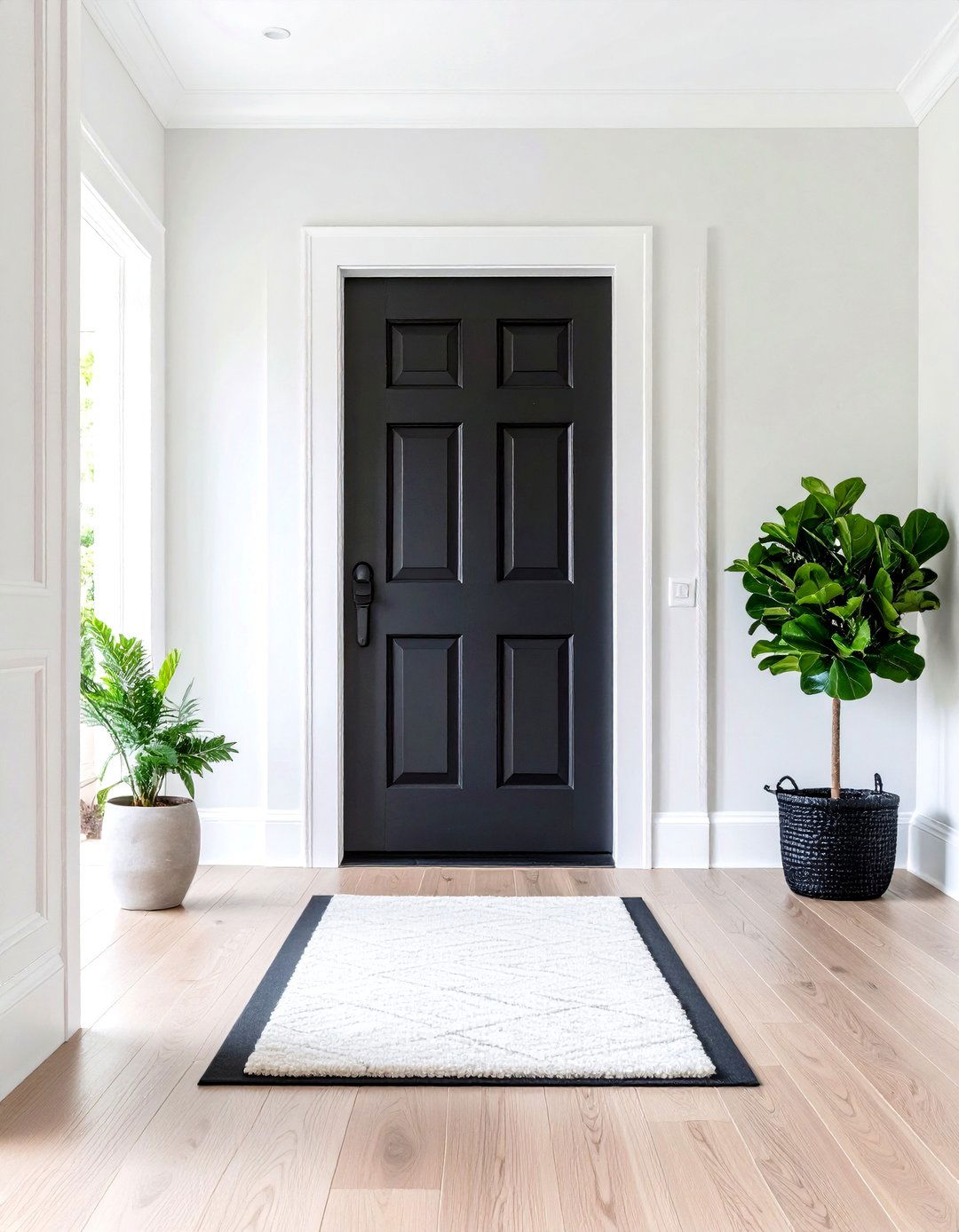
For renters or budget renovators, peel-and-stick molding in black offers a reversible taste of the look at a fraction of typical carpentry costs. The lightweight foam strips adhere with pressure, cut easily with scissors, and paint over cleanly when you move. Install them on doorframes first—high traffic will prove durability—then expand to baseboards. Because adhesive may fail on dusty walls, swipe surfaces with rubbing alcohol before application. Should a gap appear, touch up with matching caulk. The project can transform a living room in one afternoon, demonstrating that black trim interiors need not be limited to custom builds or hefty budgets.
20. Black Trim Backdrop for Art Displays

Finally, black trim interiors excel at spotlighting artwork; the dark edge behaves like a gallery frame, isolating canvases against pale walls and intensifying colors within the art. Hang pieces so their lowest edge sits two inches above the trim to create a continuous sightline. If art is oversize, paint a slim black border four inches around the piece so wall color never peeks through. Museums avoid glare, so choose a matte finish on nearby trim to prevent reflections across glass. A picture light in antique brass finishes the vignette, and suddenly even thrift-store prints feel curated and museum-worthy overnight.
Conclusion:
From minimalist baseboards to jewel-toned walls edged in ebony, these twenty concepts reveal how black trim interiors adapt to every style, budget, and room size. The strategy is simple—underline what you love, conceal what you don’t, and let the sharp contrast direct the story—yet the results feel bespoke. Armed with sheen know-how, prep tips, and finish pairings, you can experiment confidently, knowing a can of black paint is both forgiving and reversible. Pick one idea, grab a brush, and watch your space gain new depth.


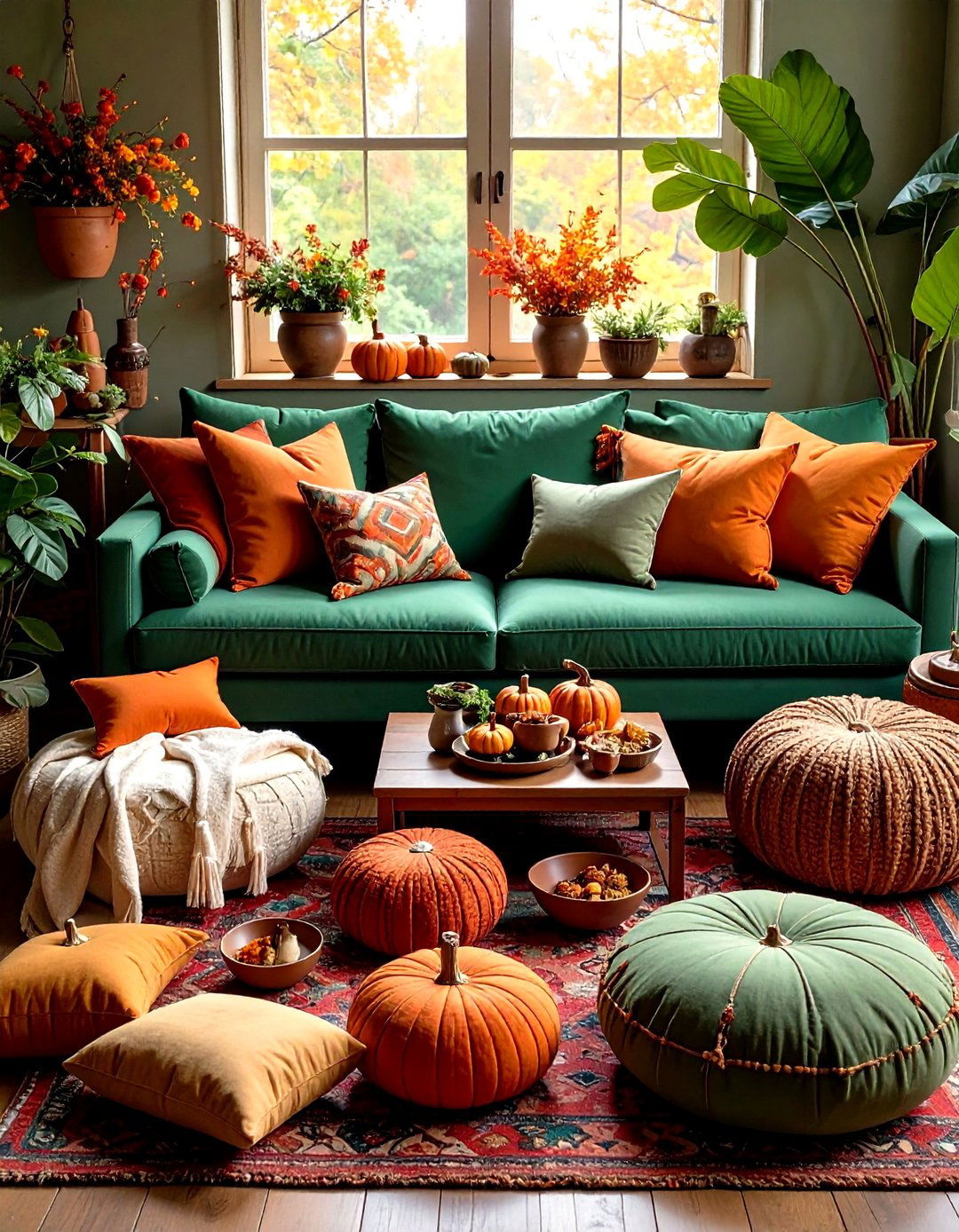
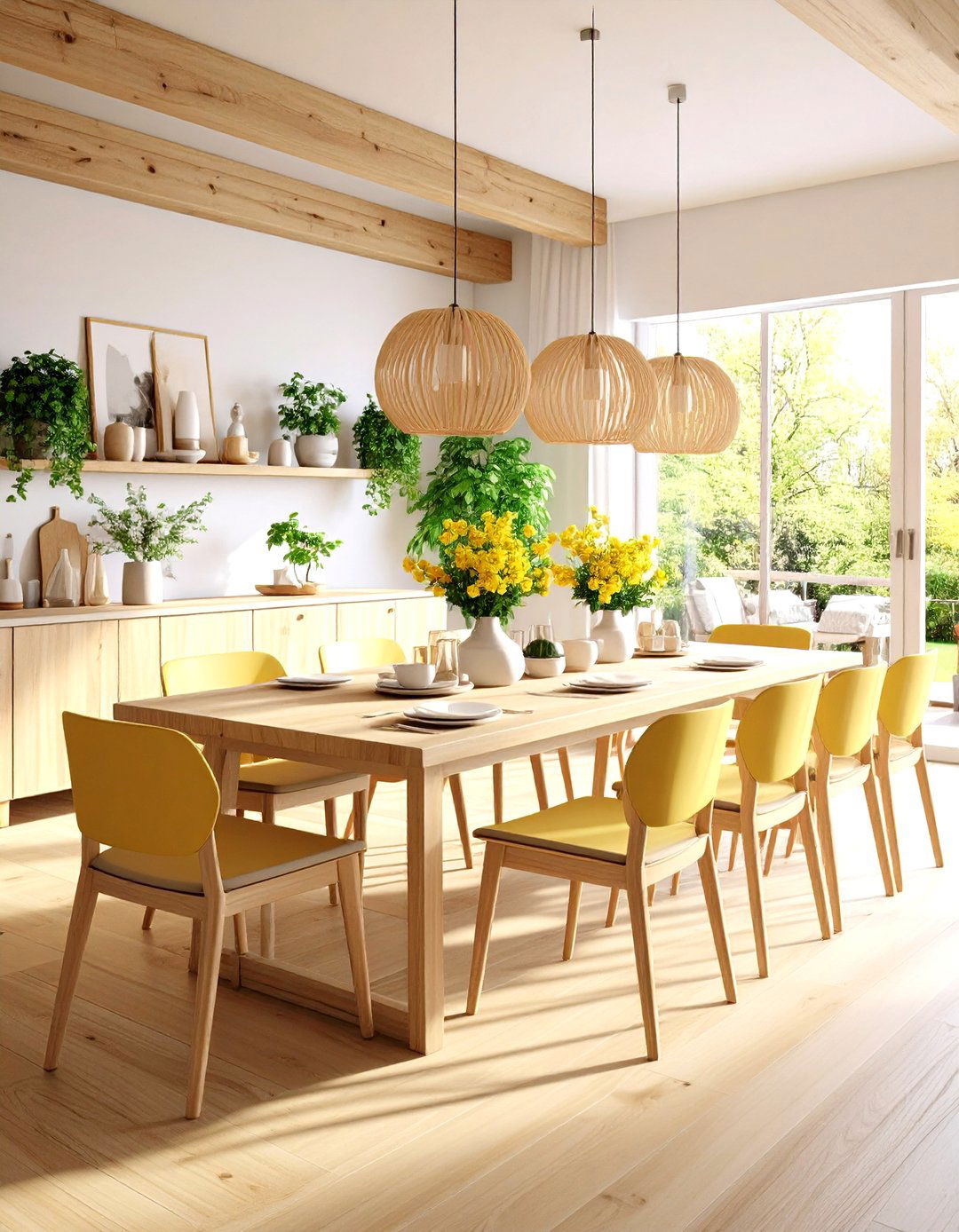
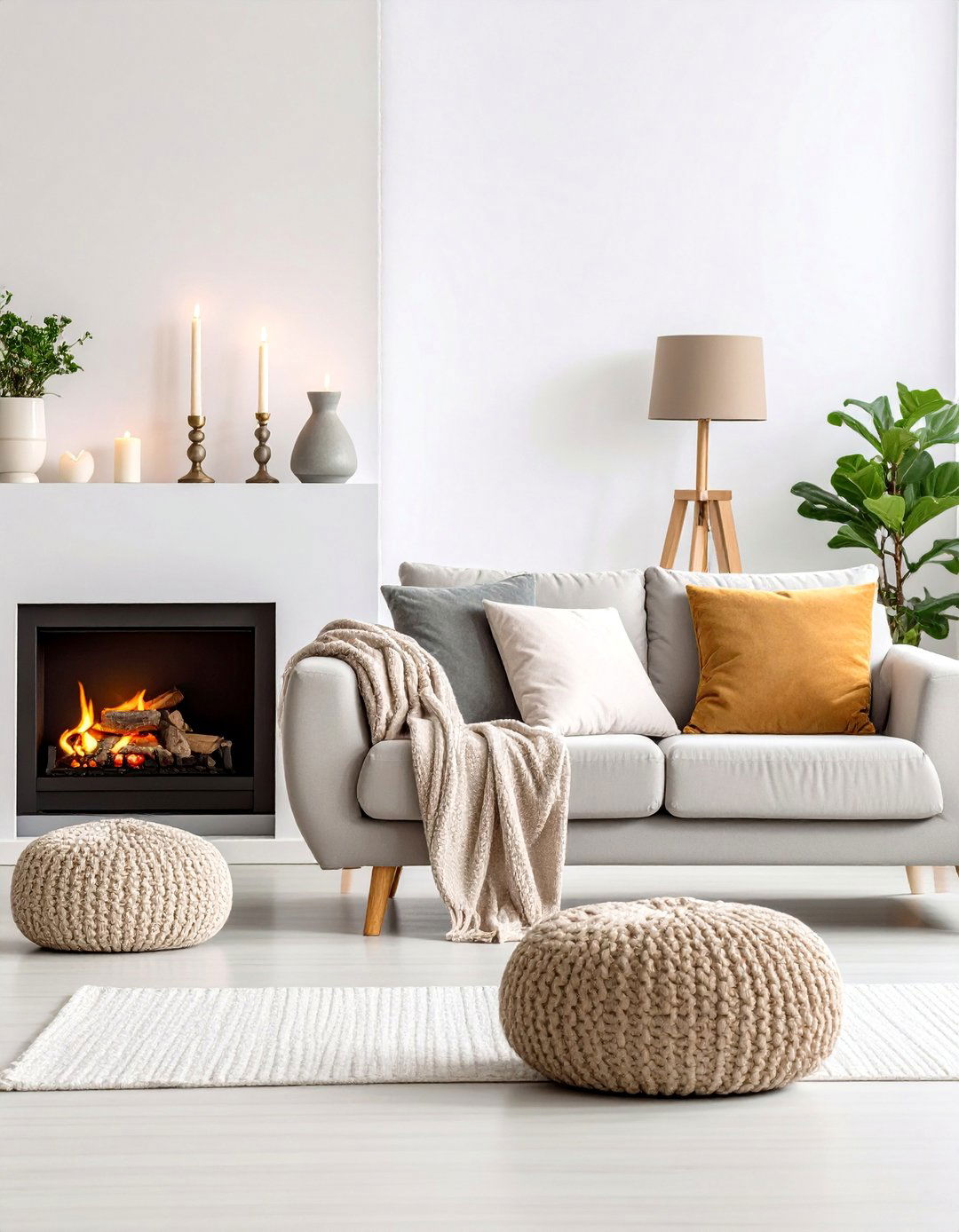


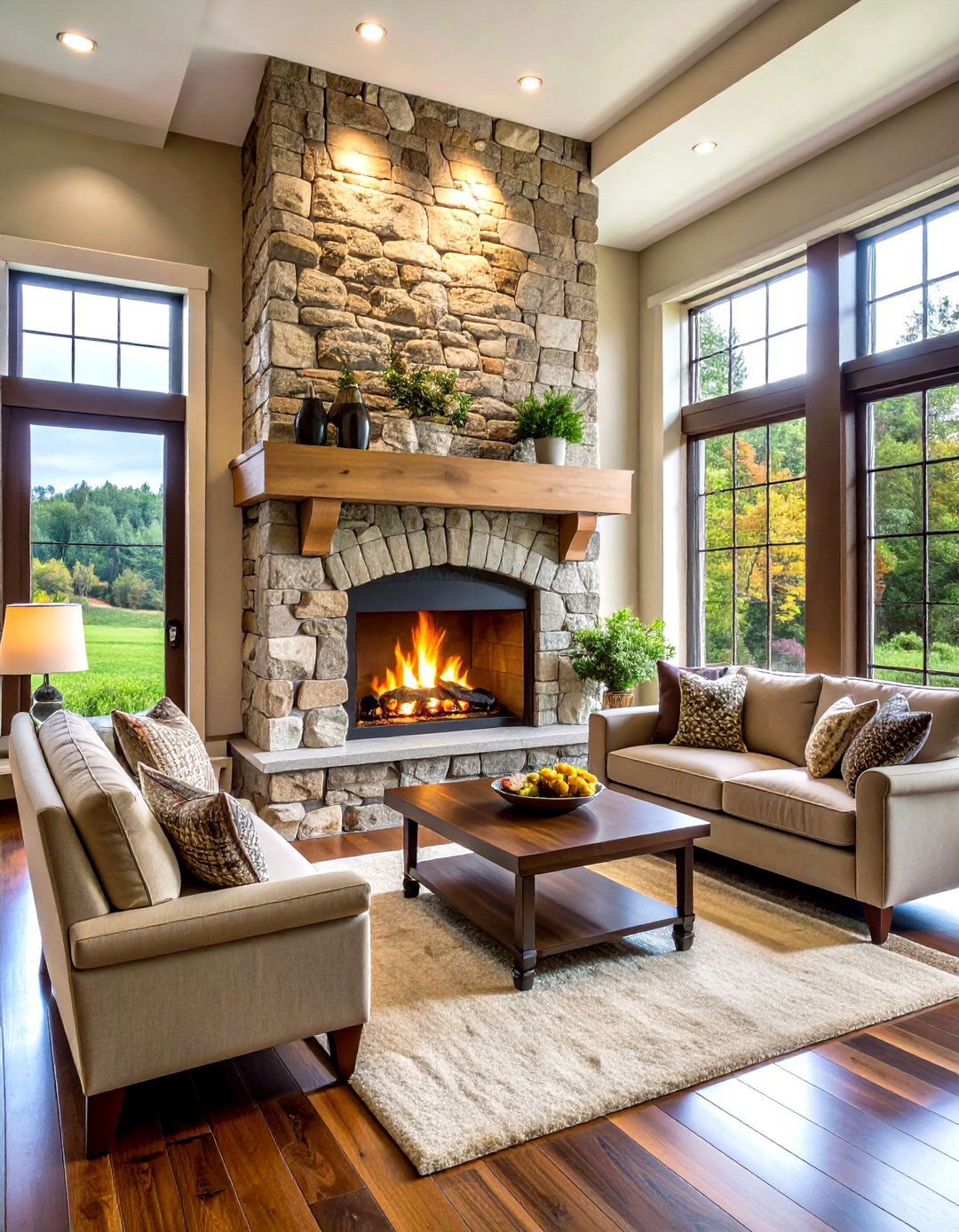
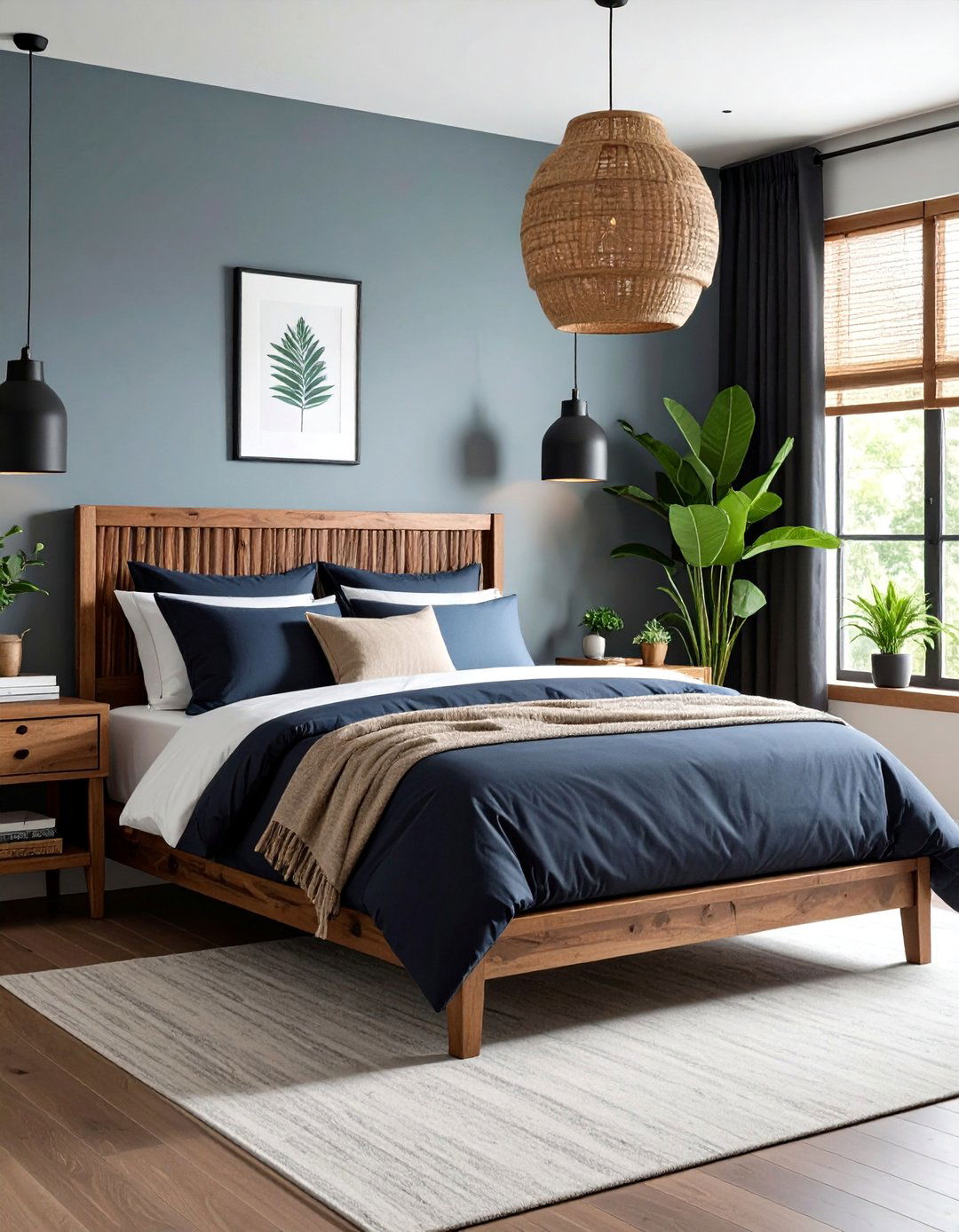
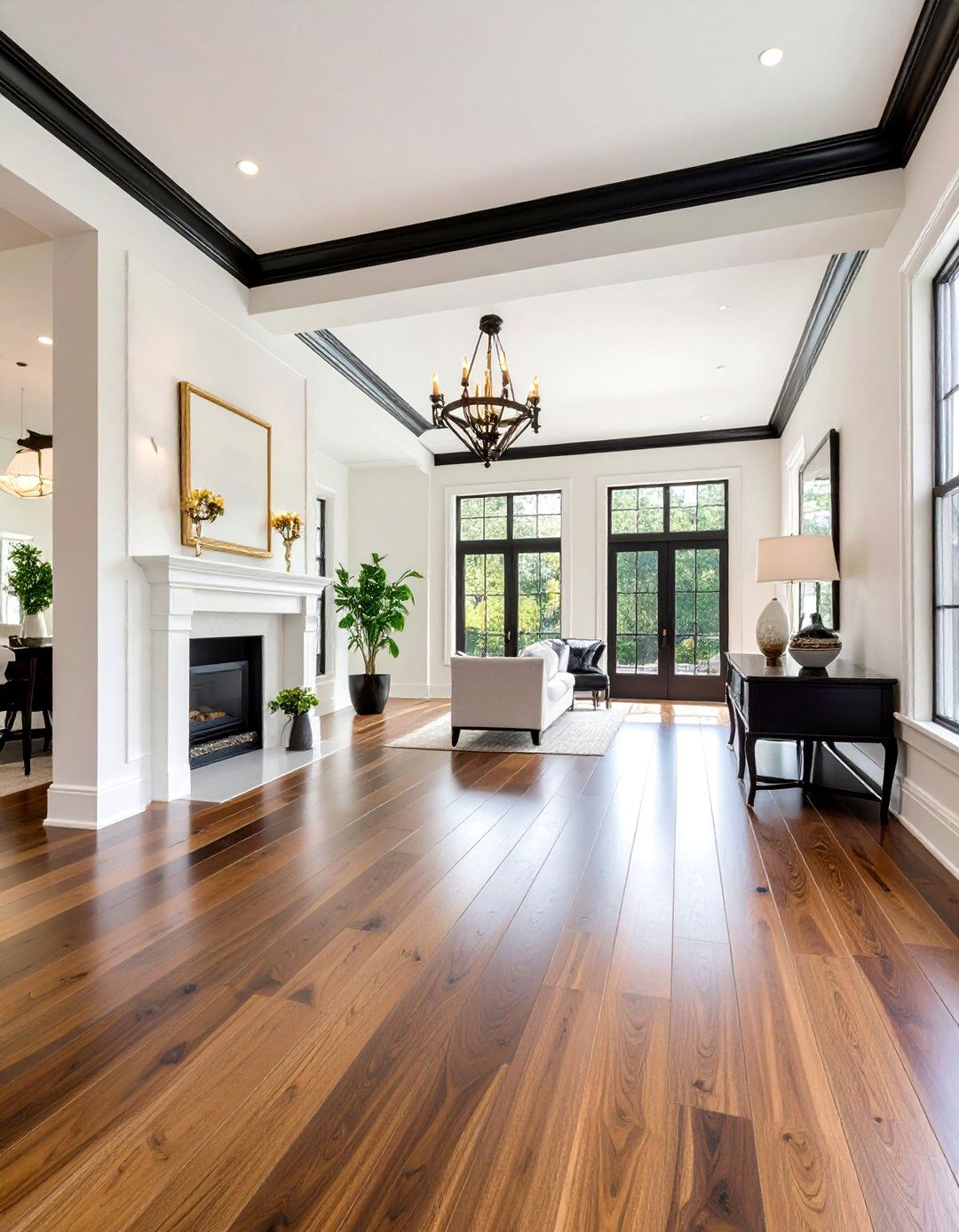
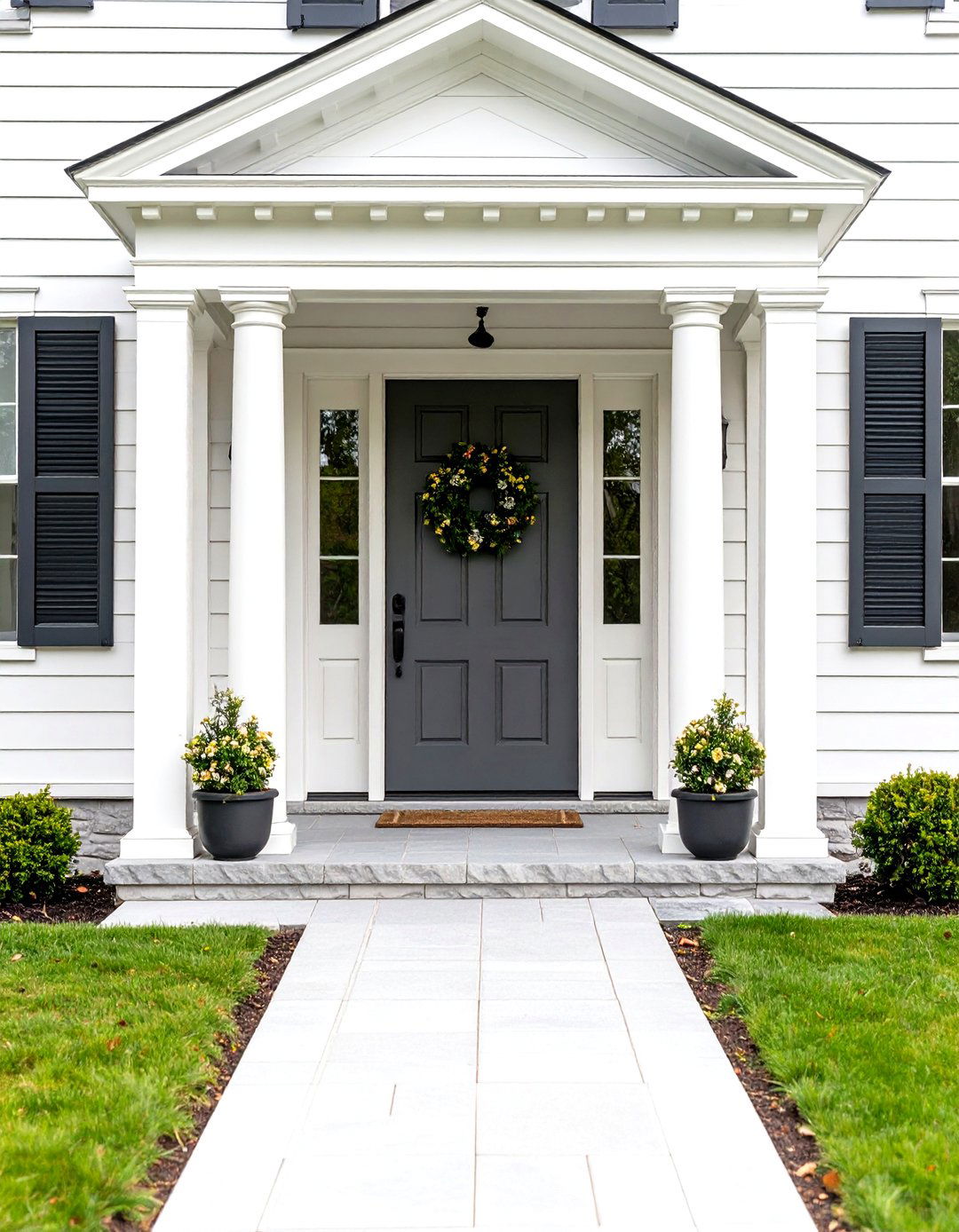
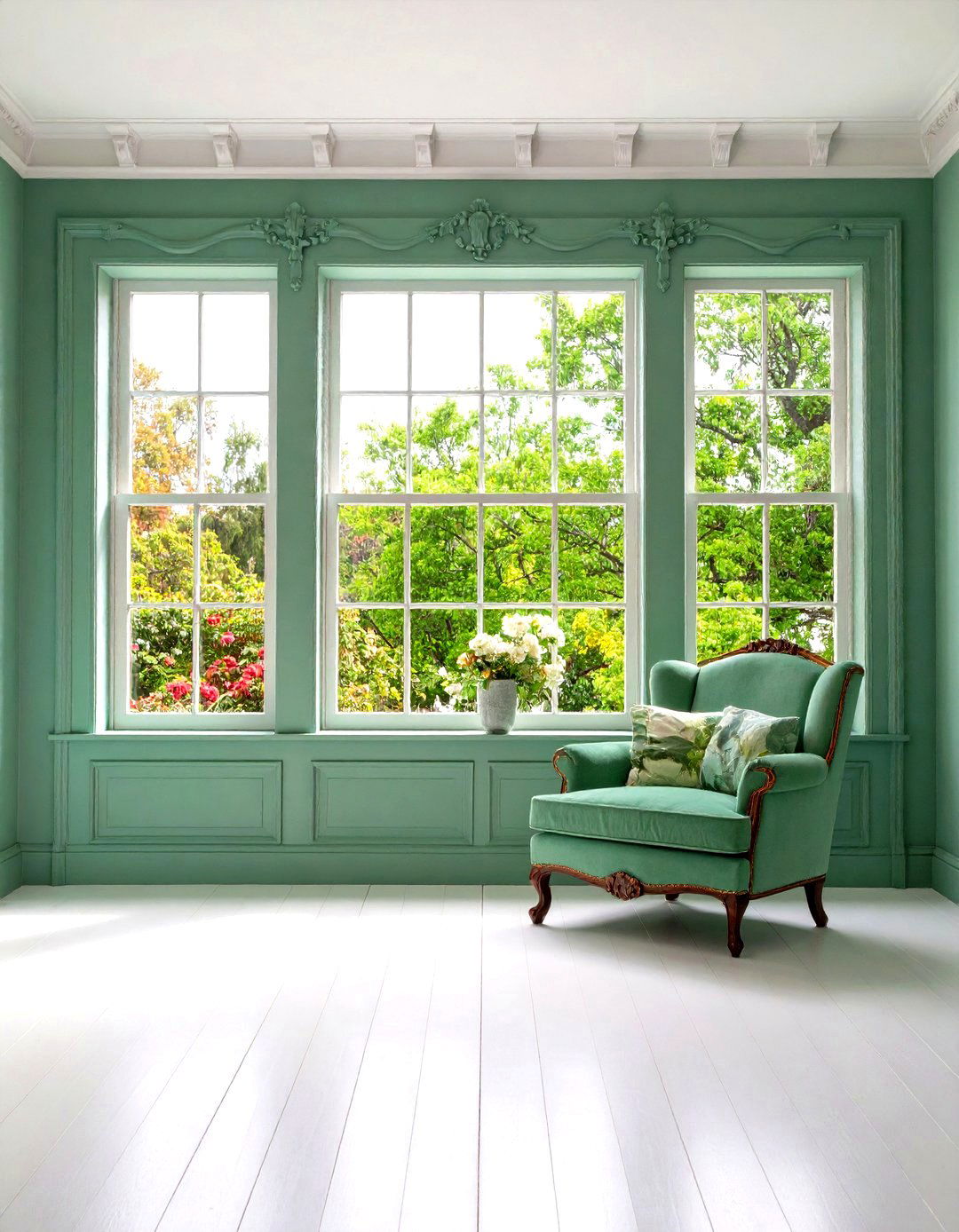
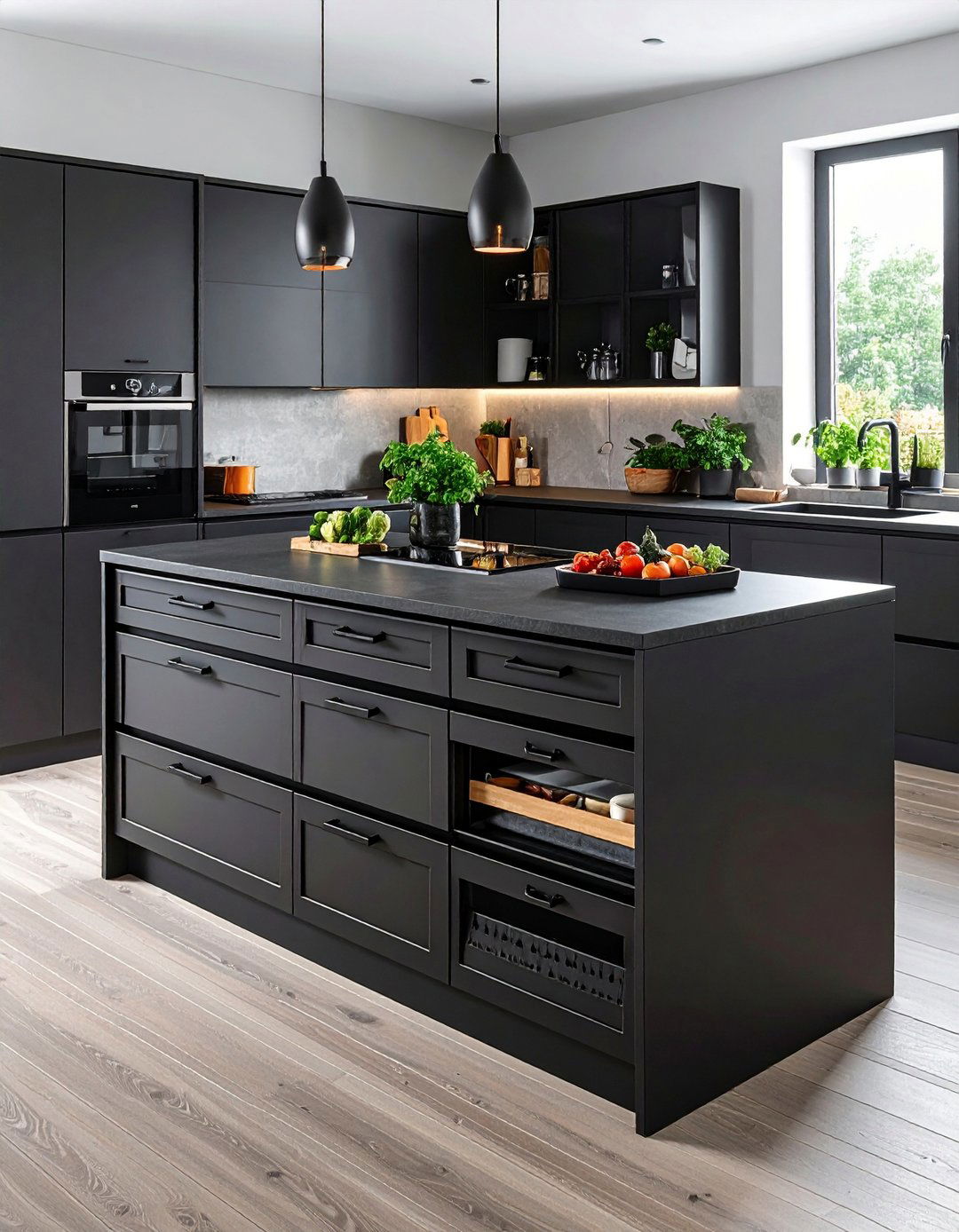
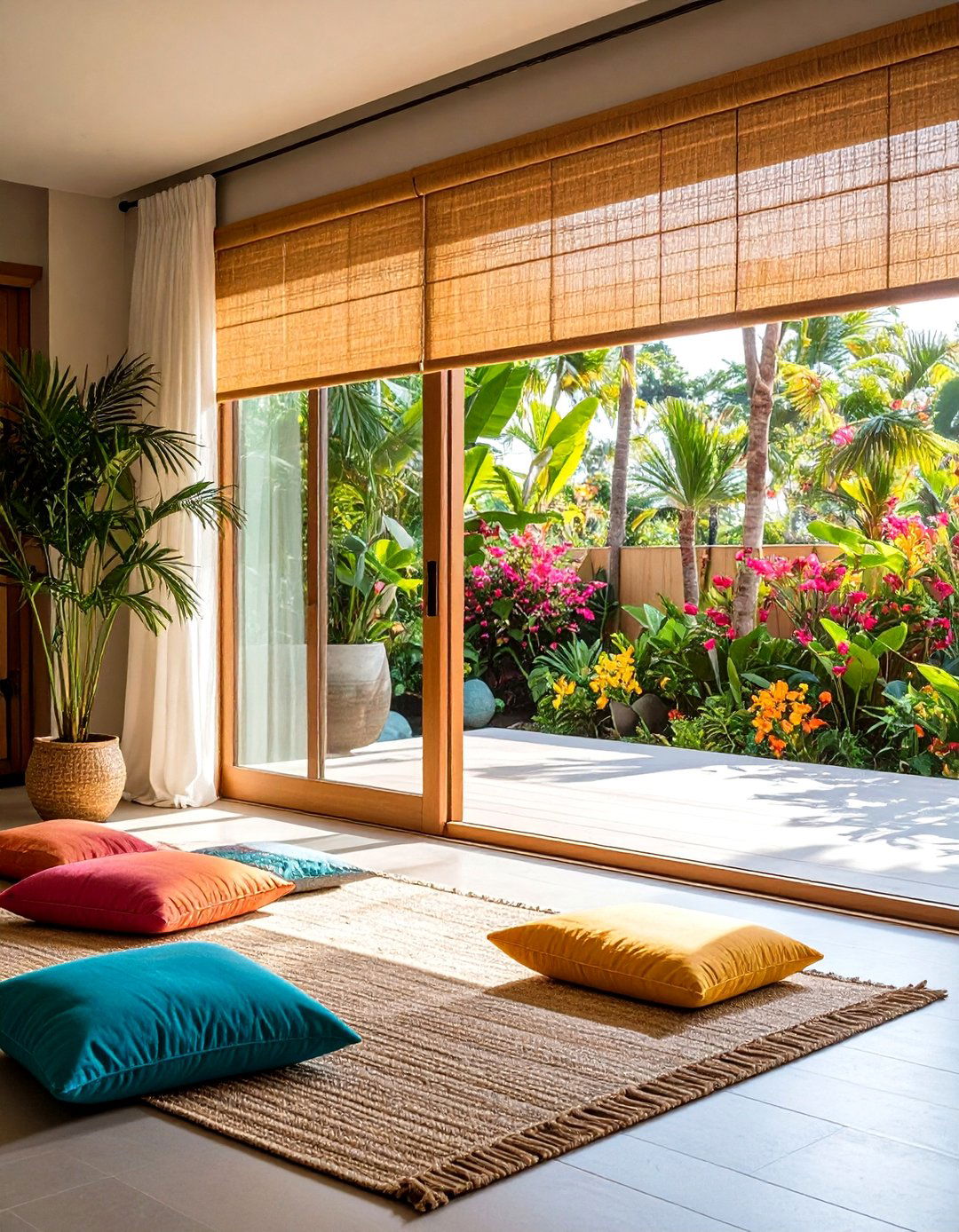
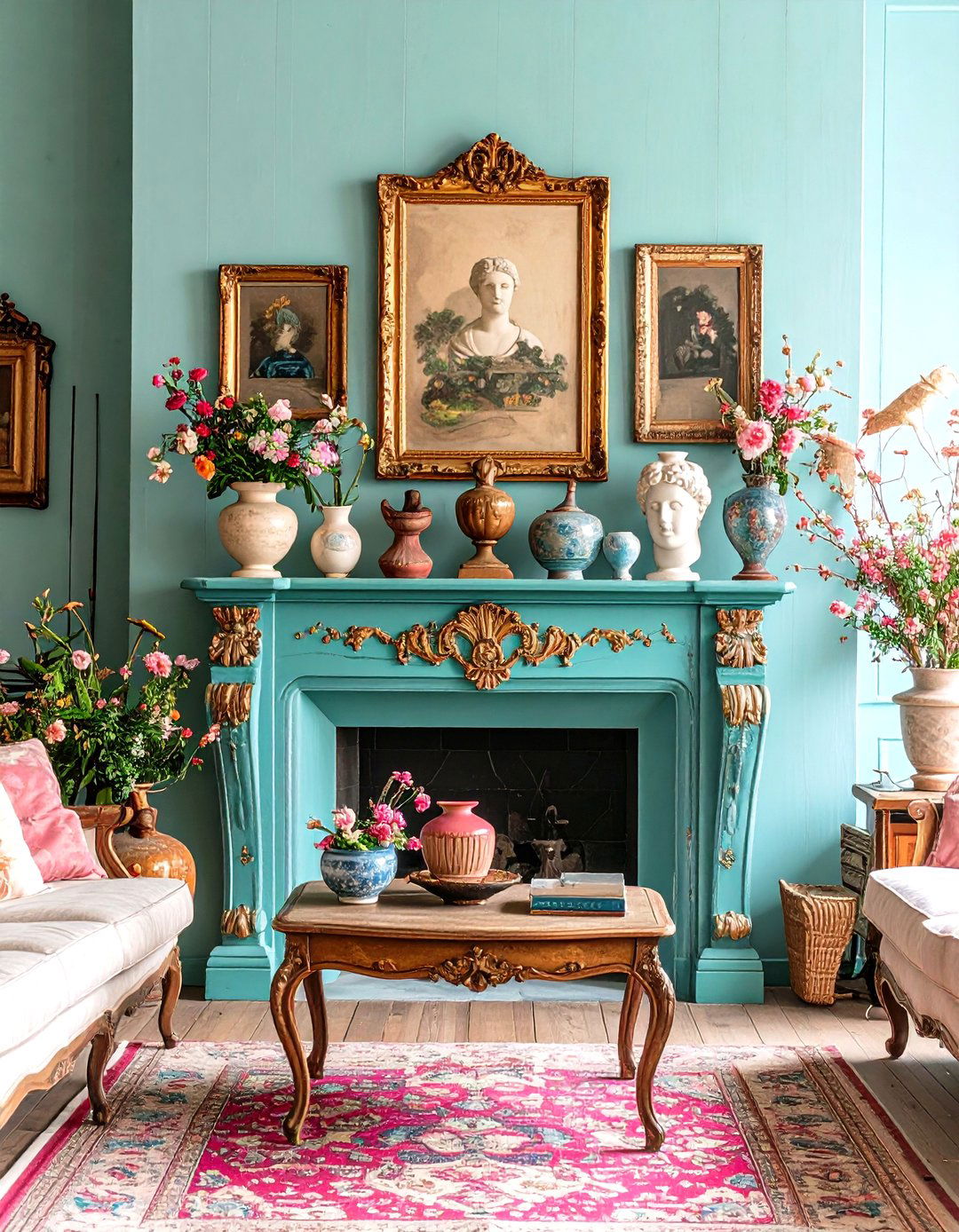
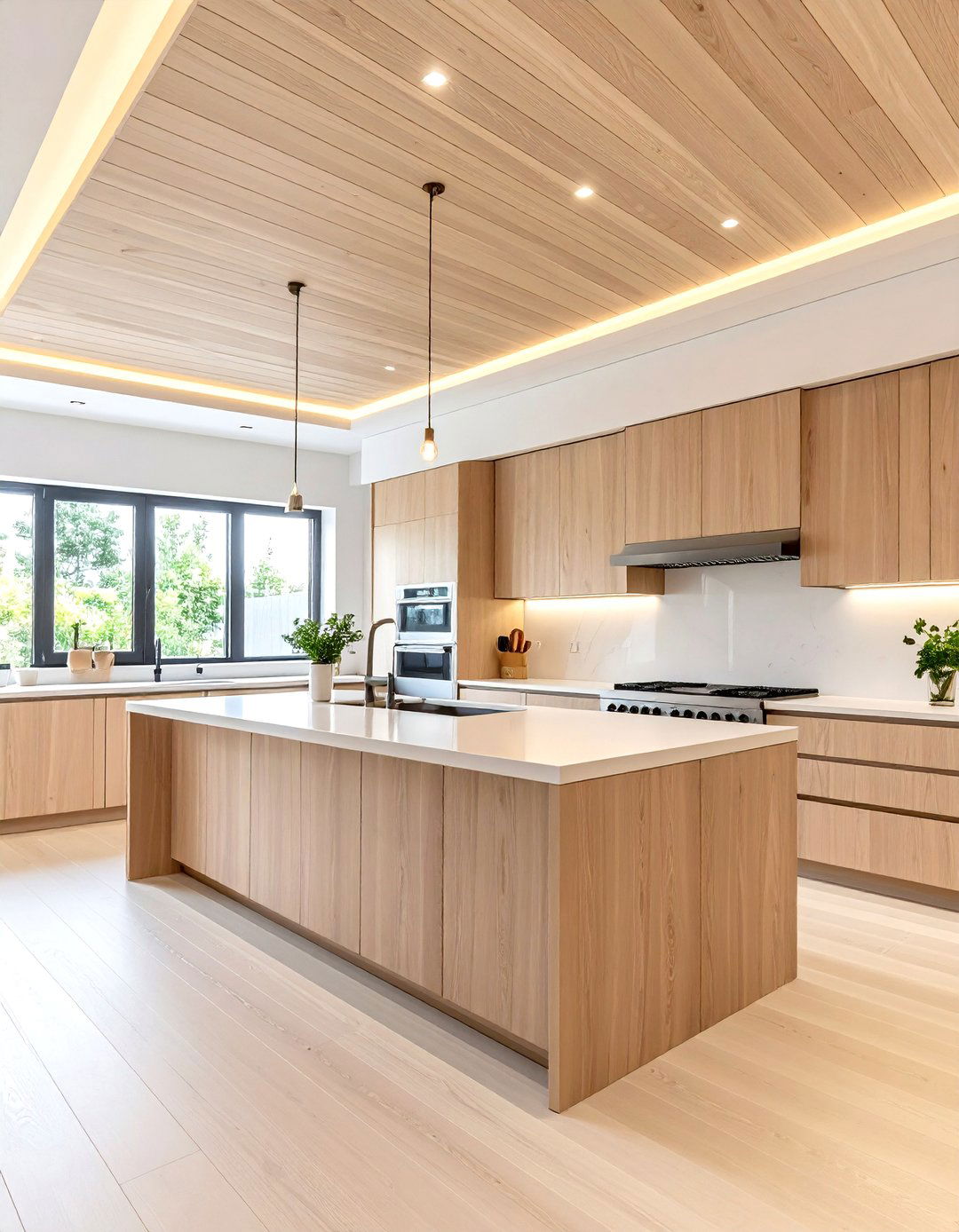
Leave a Reply